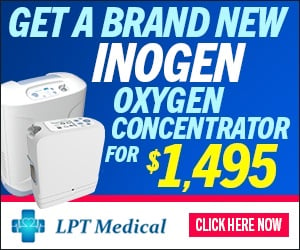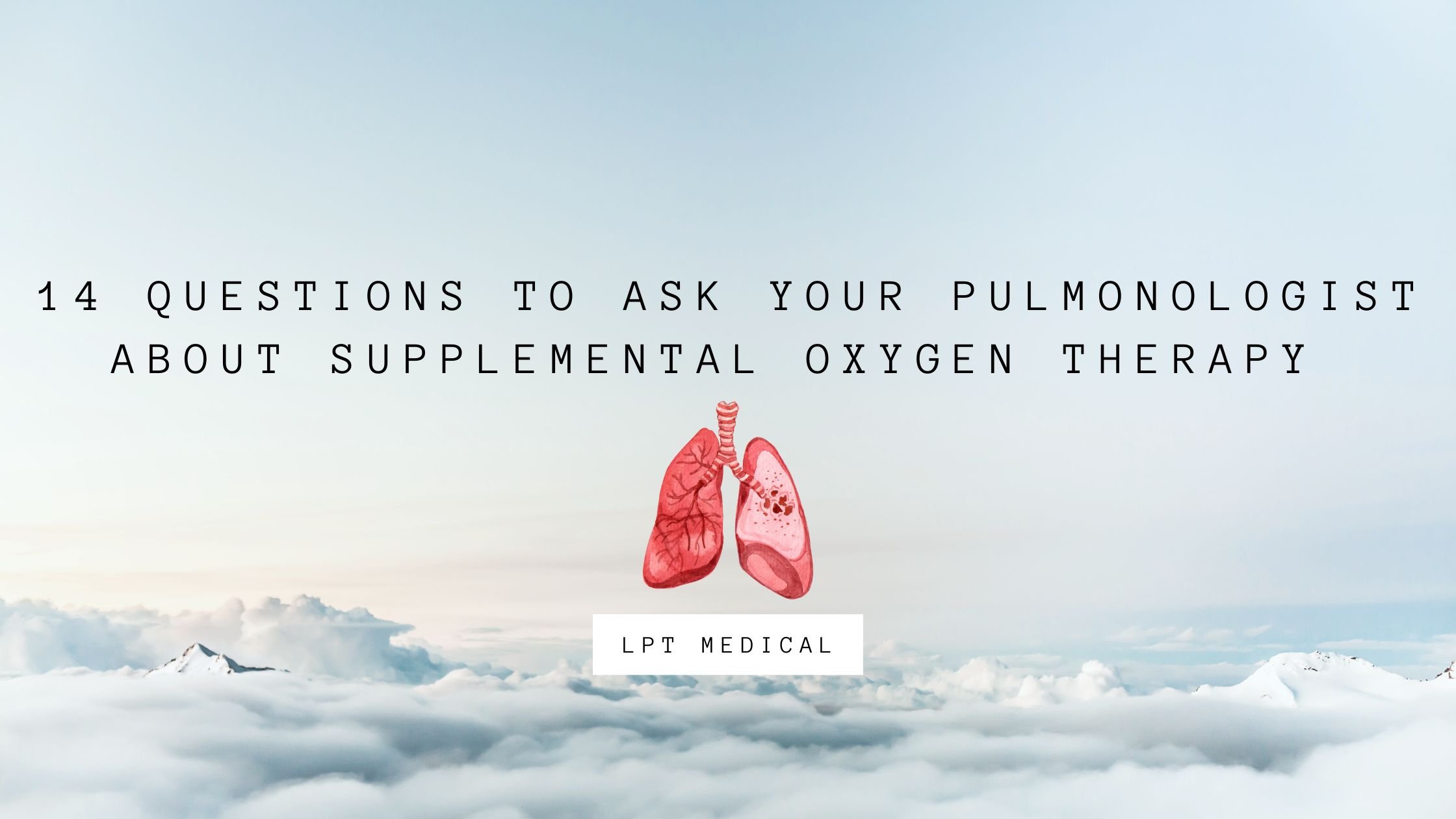
Supplemental oxygen is a type of medical therapy used to treat chronic lung conditions like cystic fibrosis, pulmonary fibrosis, and COPD. The aim of supplemental oxygen is to maintain a patient’s blood oxygen levels which are vital for systemic health. Every organ in the body requires oxygen in order to function properly, so using supplemental oxygen as it’s advised by your doctor can provide you with immense short- and long-term benefits.
Despite how important supplemental oxygen is for respiratory patients, receiving a prescription for oxygen therapy can be a scary experience. You likely have a lot of thoughts and concerns running through your mind and you’re likely overwhelmed by the prospect of being connected to an oxygen delivery device. While these concerns are certainly justified, it’s important to take a step back and begin to clarify your concerns with your doctor. Chances are, as you learn more about oxygen therapy and become more experienced with using it, many of your concerns will begin to disappear.
To help you organize your thoughts, we’re going to be discussing 14 questions you should ask your pulmonologist about supplemental oxygen therapy. Feel free to either print out this article or take notes so that you know exactly what to ask your doctor during your next visit. If you enjoy this article and you’re looking for more information, be sure to read through our post titled “16 Questions You Should Ask Your Doctor About COPD.”
1.) Is Oxygen a Necessity or a Suggestion?
Chances are, you or someone that you know has fallen back on a prescription at some point. Either you never make it to the pharmacy to pick up your medication or you simply stop using the medication for one reason or another. This Harvard Medical report states that many people either forget to use their medication, or they never fill it due to high copayments. So, naturally, you might wonder whether or not your oxygen therapy prescription will follow a similar trend. As a general rule of thumb, you should take what your doctor says seriously, because it’s unlikely that he/she would make you go out of your way or spend extra money on something that isn’t necessary. However, it doesn’t hurt to address these concerns so that your doctor can clarify the rationale behind your oxygen prescription.

2.) What are the Benefits of Oxygen Therapy?
The second thing you should ask your pulmonary doctor about are the benefits you can expect to reap from using supplemental oxygen. The air around us contains about 21% oxygen, but for someone with impaired lung function, this is not always enough for them to sustain their blood oxygen levels. The goal of oxygen therapy is to provide the lungs with a higher concentration of oxygen in order to reduce the load on the lungs. You may experience additional benefits from using supplemental oxygen based on the severity of your disease. Be sure to ask your doctor about this.

3.) What is My Flow Rate?
Your flow rate determines the amount of oxygen that you will be receiving when you put on the nasal cannula. It’s imperative that you know the exact amount of oxygen that you should be receiving because inhaling too much oxygen can lead to a condition called oxygen toxicity. This condition results in dizziness, fatigue, nausea, and eventual lung damage. Conversely, receiving too little oxygen will not provide you with the full benefits of supplemental oxygen.

Oxygen flow is measured using one of two different measurements. Pulse dose oxygen devices are measured in milliliters per minute (ml/min) and continuous flow oxygen devices are measured in liters per minute (LPM). The amount of oxygen that you’re prescribed will be based on the severity of your respiratory impairment, but generally speaking, most people need less than 2 LPM of oxygen.
4.) How Many Hours a Day Should I Use Oxygen?
Knowing how long you should be using oxygen is just as important as knowing your oxygen flow setting. If you’re using oxygen inconsistently, you might see a lot of your respiratory symptoms start to return. Long-term oxygen therapy is usually done for at least several hours a day, and your doctor will work with you to determine the best time to use it. If your doctor prescribes you with 24/7 oxygen, then you should discuss with your doctor about using an oxygen concentrator which doesn’t need to be refilled constantly like oxygen tanks or liquid oxygen tanks.

5.) What Type of Oxygen Device Should I Buy?
You might be surprised to find out how many oxygen devices there are on the market. You’ll have a whole host of options to choose from including traditional oxygen tanks, liquid oxygen tanks, stationary oxygen concentrators, and portable oxygen concentrators. But as someone who’s new to supplemental oxygen, you likely don’t know where to even begin with choosing one of these. Your doctor will likely have some information for you regarding which oxygen devices you should avoid and which ones you should consider.

It’s important to be careful when you’re purchasing an oxygen device. You may encounter companies that try to sell you oxygen without a prescription or that boasts prices that are significantly lower than any other company. However, these are most likely scams. Before making any decisions, be sure to research the company that you’re buying from to make sure that their products are reliable and that they follow all laws and regulations. For more information about how the U.S. Food and Drug Administration (FDA) regulates oxygen, please visit this page.
If you need a quick reference the ARYA Airtivo Max is a pulse flow portable oxygen concentrator that only weights 4.2 pounds, and has pulse flow operational setting from 1 through 6. This is a best selling oxygen device. It is very popular among oxygen users that live active lifestyles. The battery powered device are great for travel and everyday activities!
6.) Is it Okay to Adjust My Flow Rate Depending on How I’m Feeling?
If you have a chronic respiratory condition like COPD or pulmonary fibrosis, it’s not uncommon for symptoms to come and go. One day, you might be out of breath or lightheaded and the next you could feel perfectly fine. Because of this, you’re going to want to clarify with your doctor when it’s okay to adjust your oxygen flow and when you should not adjust your oxygen flow. The reason it’s important to ask this question is because your increase in symptoms may be due to something completely unrelated to your blood oxygen levels. In which case, increasing your oxygen flow would not benefit you.
.jpg?width=461&name=CAIRE_FreeStyle_Comfort-Nursery_10%20(1).jpg)
7.) How Can I Track My Blood Oxygen Level?
A pulse oximeter, or pulse ox device, clips onto your finger and measures the saturation of oxygen in your blood (SpO2). They are noninvasive and they work by passing rays of light through your finger to measure the amount of oxygen-carrying hemoglobin. While they aren’t the most accurate method of measuring blood oxygen levels, they are very lightweight and portable meaning you can pack one in your purse or handbag for easy access. If your doctor hasn’t already provided you with one, it’s worth mentioning it so that you have a way of monitoring your oxygen levels. To learn more about blood oxygen levels, read this post.

8.) Is Oxygen Therapy Safe?
Since oxygen is a controlled substance in the United States and requires a prescription, you may be wondering if it’s even safe to use in the first place. The answer to this question is “yes,” however, there are some things you should be aware of. Firstly, as aforementioned, using more oxygen than you’re prescribed will put you at risk of experiencing oxygen toxicity. Secondly, the safety of oxygen therapy depends heavily on the type of oxygen device you’re using.
Traditional oxygen tanks are the most dangerous because they contain compressed oxygen and they’re also heavy and bulky. Portable oxygen concentrators are the least dangerous oxygen device because they are lightweight and do not contain compressed oxygen. Oxygen is an “oxidizer” meaning it increases the flammability of anything it comes into contact with. So, you should never smoke near your oxygen device or use it near an open flame.
9.) Should I Be On Oxygen When I Sleep?
If your doctor prescribes you with 24/7 oxygen, you might be wondering how this will work when you’re sleeping. Your breathing rate and depth fluctuate a lot when you sleep so the amount of oxygen that you’re receiving could change throughout the night. This is why it might be worth it to invest in a portable oxygen concentrator like the Caire FreeStyle Comfort or the Inogen One G5. Unlike oxygen tanks, these devices closely monitor your breathing as you sleep and adjust your intake accordingly.

If you have a sleep disorder like obstructive sleep apnea (OSA), you may need to use your PAP device and your oxygen device at the same time while you sleep. PAP therapy is of critical importance for OSA patients because it keeps their airways open as they sleep allowing them to get restful sleep without interruptions. To use your CPAP device with your oxygen device, you need to be using a continuous flow oxygen unit and have a bleed in adapter that connects the tubing together. The Respironics SImplyGo is the perfect portable oxygen concentrator for CPAP compatibility.
10.) How Can I Eliminate Discomfort While on Supplemental Oxygen?
For the most part, oxygen therapy shouldn’t cause any discomfort. However, some people encounter issues with the nasal cannula such as irritation inside the nose due to dryness or some other reason. Humidifiers can actually be attached to your oxygen device to help ease the discomfort and there are a number of other accessories you can purchase that make the process more comfortable. We actually wrote a guide discussing some of the issues oxygen patients face and how to solve them. Check it out here.

11.) Can I Exercise on Oxygen?
Consistent moderate exercise is crucial for pulmonary wellness. Not only does exercise improve the strength of your lungs but it also increases the efficiency that your heart pumps oxygen throughout your body. So, just because you’ve started oxygen therapy does not mean that you should stop exercising. Check out this post which has some tips for exercising with an oxygen device and be sure to ask your doctor for advice as well.

12.) What Do I Need to Know to Travel With Oxygen?
Traveling around the world with COPD is much easier than ever before thanks to portable oxygen concentrators. The Federal Aviation Administration (FAA), the organization that oversees all commercial flights in the United States has approved most POCs for in-flight use. However, to make sure you have everything you need, you should contact your airline at least 48 hours before your flight. Most airlines require that you have at least one and a half times as much battery life as the duration of the flight. This will make up for any delays that may occur before and after you land.

13.) How Do I Maintain My Oxygen Device?
With the advent of the novel coronavirus, cleaning has taken on a whole new meaning. No matter what type of oxygen device you decide to use, you should take the time to clean it regularly. What’s more, nasal cannulae and oxygen tubing should be replaced every two weeks to ensure it’s clean and ready for use. If you purchase a portable oxygen concentrator you should remove the particle filters each week and wash them off. This will ensure that the air you’re inhaling through the cannula is clean and free of dust and dirt.

14.) Will I Need to Get Retested For Supplemental Oxygen?
Doctors typically use arterial blood gas analysis, pulse oximetry, and various lung tests to determine your need for supplemental oxygen. However, you may need to take on-going tests to help your doctor determine whether or not you still need oxygen in the future. Ask your doctor what kind of tests you will need to take and how often you should come in for a checkup once you are using your oxygen device. Some patients find it helpful to get a certificate of medical necessity which can help you file insurance claims and apply for benefits.

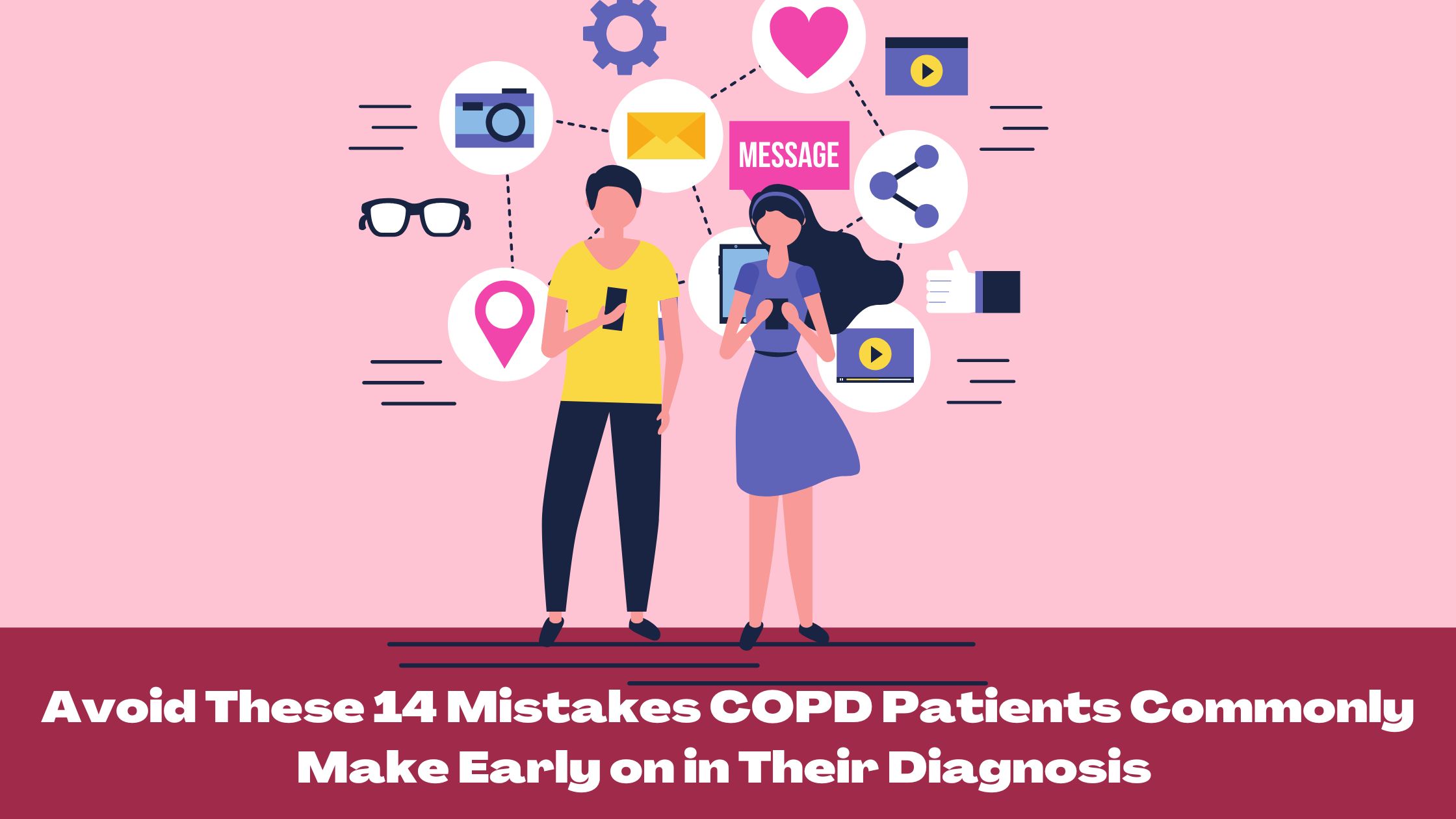
Are you newly diagnosed with COPD? Do not make these common mistakes, read this post to learn about what and how to avoid complications early on!
Getting diagnosed with COPD can seem overwhelming, especially when it catches you by surprise. It's often even more overwhelming to get used to all the new treatments, medications and lifestyle changes required to keep your lungs healthy, especially while you're still trying to come to terms with your diagnosis.
As a chronic disease, COPD requires constant work and careful decision-making to keep the symptoms under control. Because of this, it's no surprise that new COPD patients make a variety of mistakes that can affect their health and well-being.
Between making changes to your diet, exercise routine, medications, and many other activities of daily life, there are a lot of opportunities for error. As you adjust to life with COPD, it's important to avoid making mistakes that could serious consequences for your health, or at least catch and correct them early on.

That's why you should learn and pay attention to the mistakes that other new COPD patients tend to make. It helps you learn more about your disease, what to look out for, and how to keep your body and lungs as healthy as possible.
In this guide, we're going to help you avoid common pitfalls by showing you the mistakes that new COPD patients frequently make. Along with each mistake we've provided solutions so you'll know how to avoid that mistake and do the correct thing instead.
By taking the time to learn from others' mistakes, you'll be much less likely to encounter the same problems yourself. In the next sections, we'll give you all the information you need to avoid falling into the same pitfalls that other patients end up in.
However, it's important to remember that mistakes and struggles are inevitable as you adjust to the many changes that getting diagnosed with COPD brings. But if you educate yourself now, you can easily correct these mistakes and avoid serious problems that could permanently affect your health.
A major part of keeping your lungs healthy and keeping your COPD under control is learning everything you can about your disease. It also means being an active, motivated participant in your treatment and knowing what you shouldn't do just as much as the things you should.
The Mistake: Not Using Your Inhaler Correctly
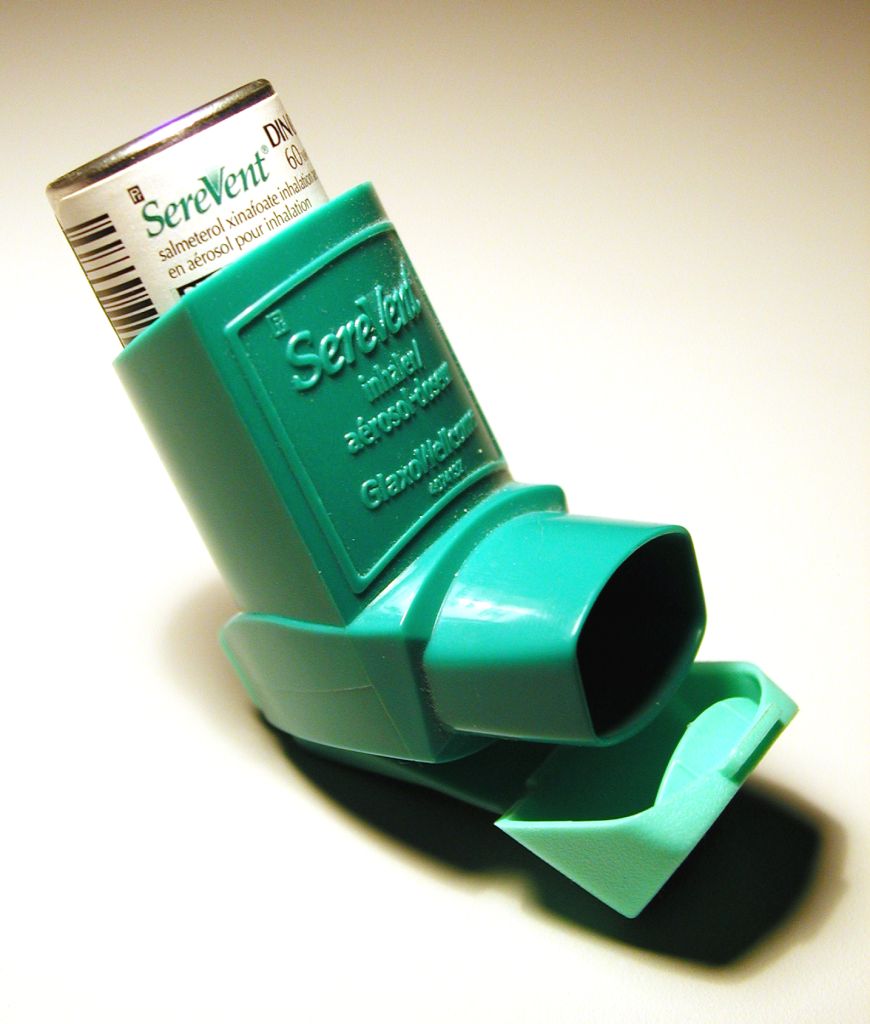
While inhalers may seem like fairly straightforward devices, a surprisingly large percentage of patients don't use their inhaler correctly. This happens to many patients who never learned the proper technique or forgot the correct steps over time. Other patients get too complacent or careless and skip steps to save time, not realizing each step is important.
Most of the mistakes patients make with their inhalers have to do with preparing the inhaler and using the right breathing technique. This is a serious problem, since these steps are necessary for getting the medication into the lungs where it needs to work.
Unfortunately, many doctors don't do their due diligence in training their patients to use their inhalers correctly. Even though doctors are supposed to check patients' inhaler technique at every appointment, it is often rare for them to take the time to do it properly in practice.
It doesn't help that many doctors don't even know proper inhaler technique themselves, meaning they can't give their patients adequate instruction. Luckily, the medical community has recently acknowledged the extent of this problem and is making efforts to raise awareness among doctors to correct it.
Here are some of the common mistakes to look out for:
- Not shaking the inhaler before each puff
- Not exhaling fully before using the inhaler
- Not holding the inhaler in the correct position
- Not timing your inhale with the spray from the inhaler
- Not inhaling deeply enough
- Not inhaling slowly enough
- Not holding your breath after inhaling the medication
- Inhaling through your nose instead of your mouth
Making any of these mistakes can result in getting too little medication or none of the medication that you need. This can be very dangerous when you suffer from COPD, because you need your full dose to prevent serious symptoms and exacerbations.
The Solution: Learning Proper Inhaler Technique
Because all inhalers are different, the only way to ensure that you're using your inhaler correctly is to re-read your inhaler's instructions and re-evaluate your technique. That means going over all the steps and guidelines in the information packet that comes with your medication.
This is important whether you're a newly diagnosed COPD patient or you have been treating your disease for some time. No matter how well you think you know it, it never hurts to double check.
You should also take your inhaler with you to every doctor's appointment so you can show your doctor exactly how you usually use it. That way, your doctor can identify any mistakes you make and show you the correct technique.
Every time you use your inhaler, make sure you follow every step and don't rush or cut any corners. Don't forget to shake or prime your inhaler if needed, and always remember to exhale before using it.
Timing your inhale with the spray from your inhaler is extremely important, but also difficult, which is why this step tends to cause patients the most problems. It may take some practice to time correctly, and you may need to use a spacer attached to the mouthpiece to help you do it right.

Studies show that when you inhale too early, then you only get about 35% of the full dose you're supposed to get. If you inhale to late, however, you end up spraying the medication in your mouth and throat instead of inhaling it into your lungs. This makes the medication ineffective and puts your lungs at risk.
To make sure you inhale at the right time and get the full dose, start breathing in slowly just before you press the button to release the medicine. Continue inhaling slowly and deeply as you feel the spray to draw the medication all the way into your lungs.
Remember that inhaling the medication isn't the last step; you still have to hold your breath to keep it in your lungs. Most recommend holding your breath for about ten seconds, then you can slowly and gently exhale.
If you are using an inhaler that contains steroid medications, then you still aren't done quite yet. To prevent the medication from drying out your mouth and throat, you need to rinse your mouth out with water before you're done.
If you ever have any questions or concerns about using your inhaler, don't hesitate to talk to your doctor. You can also ask your pharmacist to demonstrate how to use your inhaler(s) or to answer any other questions you have.
You can also find tips and information online for a variety of different types of inhalers. However, this should never be a replacement for the information you can get from your doctor and prescription information.
The Mistake: Not Knowing When to Take Which Medications
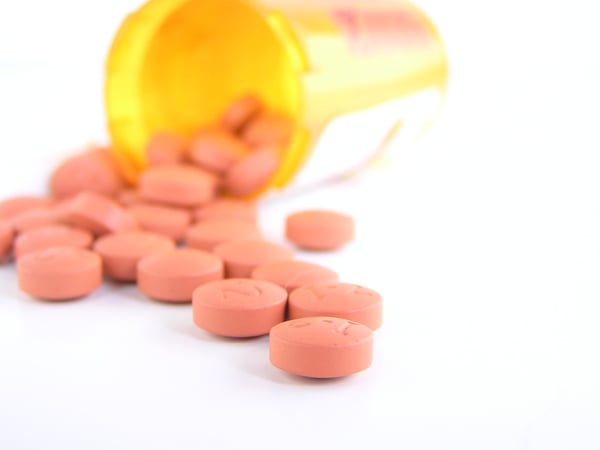
Nearly all COPD patients take two major types of medications: maintenance medications and quick-relief medications (also known as rescue medications). Both medications are delivered via inhaler, which is why patients sometimes get them confused.
This can be dangerous, because you need to use both medications correctly in order to treat your COPD effectively and keep your symptoms under control. Mixing up the two medications or forgetting to take them at the right time could make your symptoms worse or cause you to have a serious COPD exacerbation.
Other medications can be confusing to use, too, especially if you are only supposed to take them on certain occasions. For example, many doctors prescribe oral antibiotics and steroid medications for their patients to use as needed to prevent and treat COPD exacerbations.
The Solution: Following Your COPD Action Plan

Every COPD patient should get a COPD action plan from their doctor shortly after getting diagnosed. If you haven't received one yet, ask your doctor to work one up for you, as studies show that they help patients better manage COPD at home.
A COPD Action plan acts like a set of guidelines for you to follow based on how bad your symptoms are from day to day. For example, most action plans have three major “zones” that correspond to the severity of your symptoms; the first zone is for when you are feeling fine, the second for mild flare-ups, and the third for more serious symptoms and complications.
Click here to see what a sample COPD action plan looks like.
Every day, you should evaluate your symptoms to determine what “zone” to look at. Then, you simply follow the instructions in that zone for what medications and what doses you should take. Most action plans also include guidelines to let you know when its safe to exert yourself and at what point you should call your doctor when your symptoms flare up.
Because most COPD patients have several different medications to keep track of, it's extremely important to take the time to learn all of the important facts about each of your medications. That includes learning their full names, what they look like, and what you are supposed to use them for.
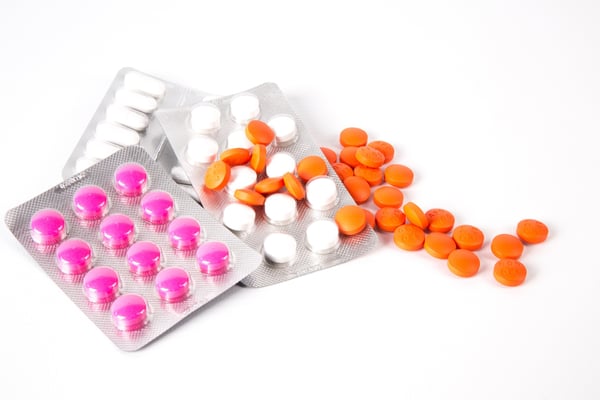
This ensures that you can match your medications with the instructions in your COPD action plan and use them exactly as your doctor directs you to. It also makes you much less likely to mix your medications up, take them at the wrong time, or forget about them altogether.
You should also bring a complete list of your medications with you anytime you go to the hospital or doctor's office. This will make it easier for the medical professionals who look after you to ensure you get the best treatment possible.
It is also important to bring this list with you whenever you travel, especially if you will be taking your medication with you on a bus, train, or airplane. You may need to present your list of medications to travel personnel, and it will come in handy if you need medical attention while you're away from your regular doctor.
The Mistake: Not Quitting Smoking
One of the most important things you can do for your health when you have COPD is to stop smoking. Unfortunately, too many patients believe it's too late for them to quit and continue to smoke even after their COPD diagnosis.
The thing is, even after you've developed COPD, there are still enormous benefits to quitting. In fact, having COPD makes it even more imperative to quit, since continuing to smoke can cause your disease to rapidly get worse.
COPD is a result of reduced lung function, often due to smoking, but continuing to smoke after COPD has set in will only harm your lungs even more. Smoking causes you to lose lung function at an accelerated rate compared to COPD patients who are able to quit.
Reduced lung function will make it even more difficult to breathe, do physical activities, and can significantly reduce your quality of life. If you quit, however, you may even see an improvement in your COPD symptoms, and you can enjoy the lung function and lifestyle you have for much longer.
While quitting smoking cannot reverse the damage that's already been done to your lungs, it can slow down the damage from getting worse. It can also increase your lifespan and reduce the number of exacerbations, flare-ups, and hospitalizations you experience because of your COPD.
Don't forget that quitting can reduce your chances for a variety of other serious health problems as well. For example, you can significantly reduce your risk for heart disease, lung cancer, and stroke if you successfully quit smoking.
The Solution: Making the Decision to Quit

It's important for every COPD patient to understand that it is never too late to quit smoking. Whether you are 25 or 65, you can improve your health and possibly even your lifespan by making the decision to quit today.
It's not an easy decision to make, and it's even harder to actually follow through. However, every year at least 350,000 smokers in the US are able to quit completely, and there's no reason why you can't be one of them.
Although quitting is hard, there are many things you can do to increase your chances of success. For example, using a quit-smoking medication or joining a quit-smoking program can make your quit attempt more likely to succeed.
When you make the decision to quit, remember that you are not alone and there are many ways to get support. First, you should talk to your doctor to see what kinds of medications and support programs are available to help you.
You may want to try nicotine replacement therapy, which is proven to increase smoking cessation rates. There are many different forms available, too, including nicotine gum, skin patches, tablets, oral sprays, and inhalers.
For more information on how to quit smoking, visit the CDC's website for a variety of helpful links and resources. You can also find helpful quit-smoking tips from the American Lung Association's website or from smokefree.gov.
Don't be discouraged if your first, second, or even tenth attempt to quit smoking ends up failing. It takes most smokers at least six attempts to quit smoking, and sometimes up to twenty, before they are able to quit long-term.
As the CDC puts it, “Quitting smoking is a marathon, not a sprint,” and you have to be in it for the long term if you truly want to live smoke free. Even though it is a long and difficult process, it is more than worth the benefits you will receive through improved health, reduced COPD symptoms, and your overall quality of life.
The Mistake: Not Eating a COPD-Healthy Diet

In order to keep your lungs and the rest of your body strong, you need to feed them the nutrients they need. That means eating a healthy, balanced diet every day to give your body fuel to work as efficiently as possible.
Unfortunately, many new patients find that controlling their weight and eating healthy foods is difficult with COPD. The disease can make it difficult to exercise and prepare healthy meals, both of which are vital for a healthy lifestyle.
COPD can make it difficult to lose weight and difficult to gain weight, which is why some patients struggle with being underweight while others struggle with obesity. Either situation is bad for your health and can make it more difficult to breathe.
If you get too few calories and nutrients, then your lungs won't have enough fuel to keep up with your body's needs. However, eating too much and gaining weight puts extra strain on your muscles and lungs, which can also make your COPD symptoms worse.

Also, because COPD makes your lungs less efficient, it means they have to work harder than healthy lungs in order to get enough oxygen to your body. This means that COPD patients need more calories and more nutrients to fuel the needs of their lungs and breathing muscles.
Another danger that many new COPD are unaware of is eating a diet that's too high in carbohydrates. Carbohydrates actually put extra strain on your lungs when digested, because they release large amounts of CO2 that then has to be processed through your lungs.
The Solution: Eating Whole Foods and Balanced Meals

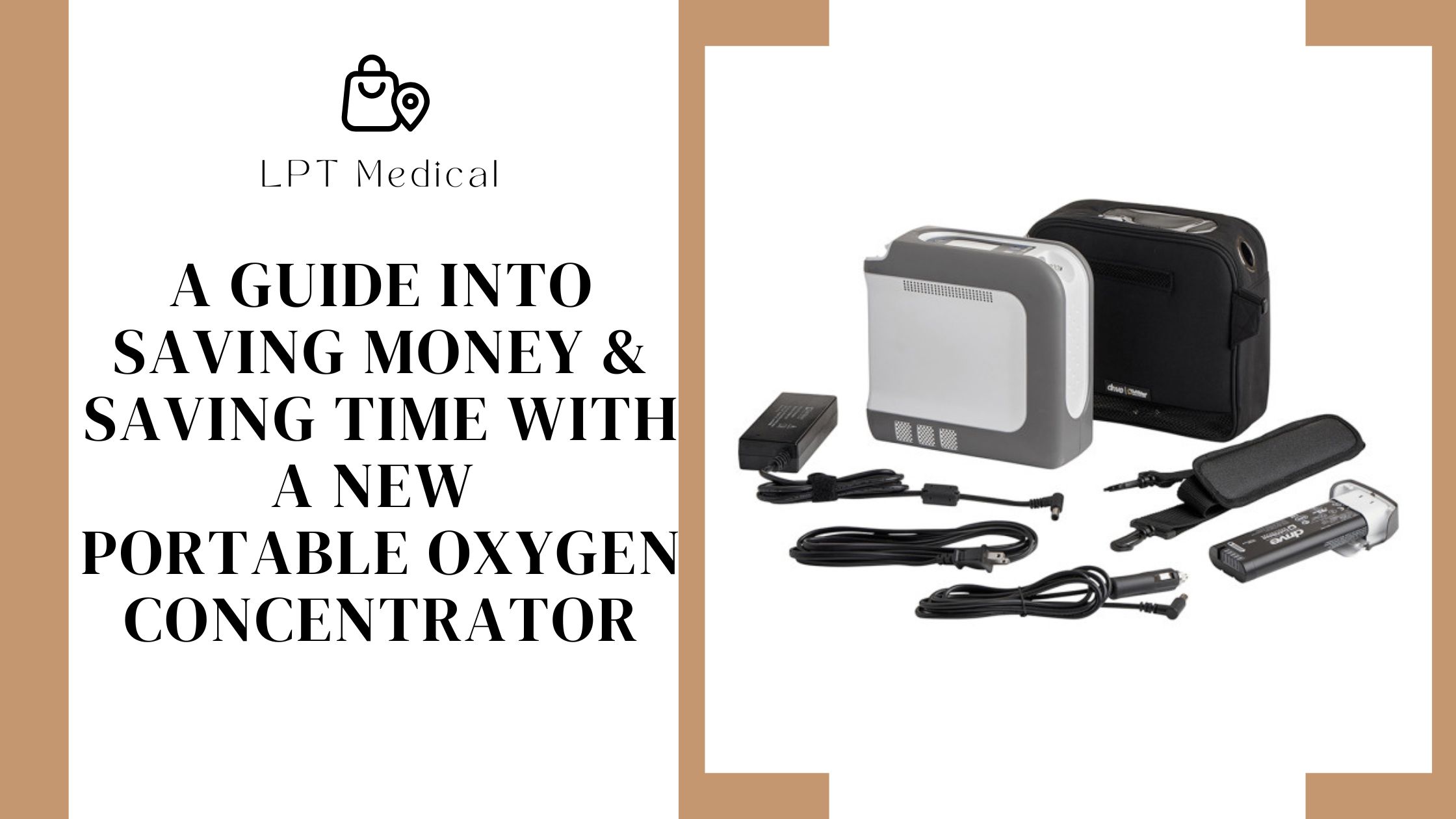
Is spending the upfront cash on a high-quality oxygen machine really worth It? How do you know you're making the best choice?
Read this blog to learn about all of the ways having a portable oxygen concentrator can impact you life. In this post, you will also learn which oxygen devices help you pursue your goals, while others may hold you back!
Oxygen and medical equipment for people with chronic conditions like COPD, lung failure, or cystic fibrosis is an essential part of daily life.
Some patients need oxygen 24/7, while others only need it while they sleep or just when they exercise.
No matter the case, getting the appropriate amount of oxygen is a crucial part of treatment that can add years to your life. Chronic lung conditions are also known as progressive disease, meaning they get worse over time.
The general decline in health or function will get worse faster if the condition goes untreated. Once the condition goes untreated, there are more risks of infection that could cause other issues not only in the respiratory system, but the circulatory system, bones, and muscles as well.

Treating your condition with a treatment plan set by you and your healthcare team is the only way you can avoid hospitalization, because there is no cure for chronic conditions, so once the damage is done, all you can do is try to keep it from getting worse.
To learn more about COPD and life expectancy you can read the article linked in blue.
What is Supplemental Oxygen Therapy

Once your disease progresses to a certain degree of severity, supplementary oxygen therapy becomes a crucial part of your treatment, and it is not “optional”. Your blood oxygen levels are so low that your body cannot function properly anymore, and without the therapy other parts of your system will break down and health issues will occur much more frequently.
Supplementary oxygen therapy is one of the principal treatments your doctor will recommend and prescribe to you once your blood oxygen levels reach hypoxic levels.
That's right…
You will need a doctor’s prescription in order to buy an oxygen device from a licensed distributor. Of course, there are knock off portable oxygen concentrators that are advertised to help people who have a hard time breathing, but these devices do not work and buying a cheap oxygen device will only cost you more money in the long run. Not to mention it will do no good in treating your condition, so it is also a waste of valuable time you could be spending saving your life!

Most oxygen users have the choice of which oxygen method they prefer to use…
You will most likely be able to choose between a portable oxygen concentrator, a liquid oxygen tank, or a gas oxygen tank.
Here is Why Portable Oxygen Concentrators Make the Most Sense Financially

There are pros and cons that come with each method, however, a portable oxygen concentrator is a far better choice for people who are looking to travel, maintain an active lifestyle, and are looking to save some money.
Save money on a portable oxygen concentrator?? There's no way!
Yup, in the long run you will actually save money by purchasing a portable oxygen concentrators from LPT Medical rather than spending the cash on refilling you tanks fro the rest of your life.

Once you own a portable oxygen concentrator like the ARYA Artivto Max you have an unlimited amount of oxygen. Simply recharge the device, and you're set to breathe all day long!
Portable Oxygen Concentrators Work Just as Well as Tanks, If Not Better!
So, how does your portable oxygen concentrator administer oxygen?

Your portable oxygen concentrator comes with either a 8 cell or 16 cell rechargeable lithium ion battery, and depending on the device you have it will last anywhere from 2 hours - 16 hours! The battery is what powers the device to extract air from the surrounding environment and the filter inside the device cleans the air of particles and purifies the oxygen you breathe in through the tubing into medical grade oxygen.

Portable oxygen concentrators are sleek and compact, compared to a cumbersome oxygen tank.
Most of the pulse flow oxygen devices are no larger than a regular sizer handbag, and they all come with a custom carrying that makes everyday chorus and traveling around with your oxygen a breeze.
Get the Oxygen you Need in Order to Take Care of Other Parts of your Life

The other factor you must consider while handling a chronic lung disease is that supplemental oxygen won’t cure anything, it will simply give you the oxygen you need that will support other parts of your life. This means that oxygen will help you get on track with your exercise routine, mental health, and sleep.
So you will need to treat the disease in other ways in order to minimize the risk of experiencing exacerbated symptoms. And besides things like taking your medications and bronchodilators, oxygen will give you the tools to exercise and sleep better, which will in-turn improve your mood and help with breathing related depression and anxiety.

Say No To Cumbersome Outdated Oxygen Tanks

That being said, having the right oxygen equipment makes a big difference when it comes to the user's experience and overall livelihood.
Tanks and canisters take away basic human freedoms and leave the oxygen patients at the will of their oxygen delivery service company, they are tied down to the enormous reservoirs while at home, and the canisters only last so long while on the go.
Also, don’t even think about traveling far… oxygen tanks and canisters are not allowed on any aircraft.

Traveling by car with an oxygen tank or the small canisters is always risky, not only because it's flammable, but also because the tank could run out and if you don't bring extra oxygen you will have to pay a pretty penny to get your oxygen refilled outside of your area.
What are your Portable Oxygen Concentrators Options

There are several brands of concentrators that are reliable and built with integrity, these brands include:
Brands like Inogen specialize in pulse flow devices and they recently put out a device that is remarkable because of its small size and weight yet its ability to give off oxygen at a rate sufficient for almost any oxygen user that needs pulse flow operation, and we are talking about the Inogen One G5.

The One G5 has long lasting battery life and it only weighs 4.7 pounds, meaning you can carry this device with you either in its custom shoulder bag, or in the One G5 backpack.
If you don't require a pulse flow operation that is higher than 4 or 5, you could use the Caire Freestyle Comfort or the Inogen One G3, and have a device that is lightweight and last for hours on one charge!

If you need continuous flow you can still use a battery powered portable oxygen concentrator! These devices will be heavier and larger than pulse flow devices because they require more power, but they are still very easy to move and travel with.
The Respironic Simply Go is the lightest weight continuous flow portable oxygen concentrator on the market, and it weighs 10 pounds!

It is equipped with a battery that is rated to last up to 6 hours of battery life on a pulse flow setting of 2 and up to 1.8 Hours of battery life continuous flow setting of 2!
If you are interested in the Respironics SimplyGoyou will also get:
- 1x Battery
- AC Power Supply
- DC Power Supply
- Custom Carrying Case
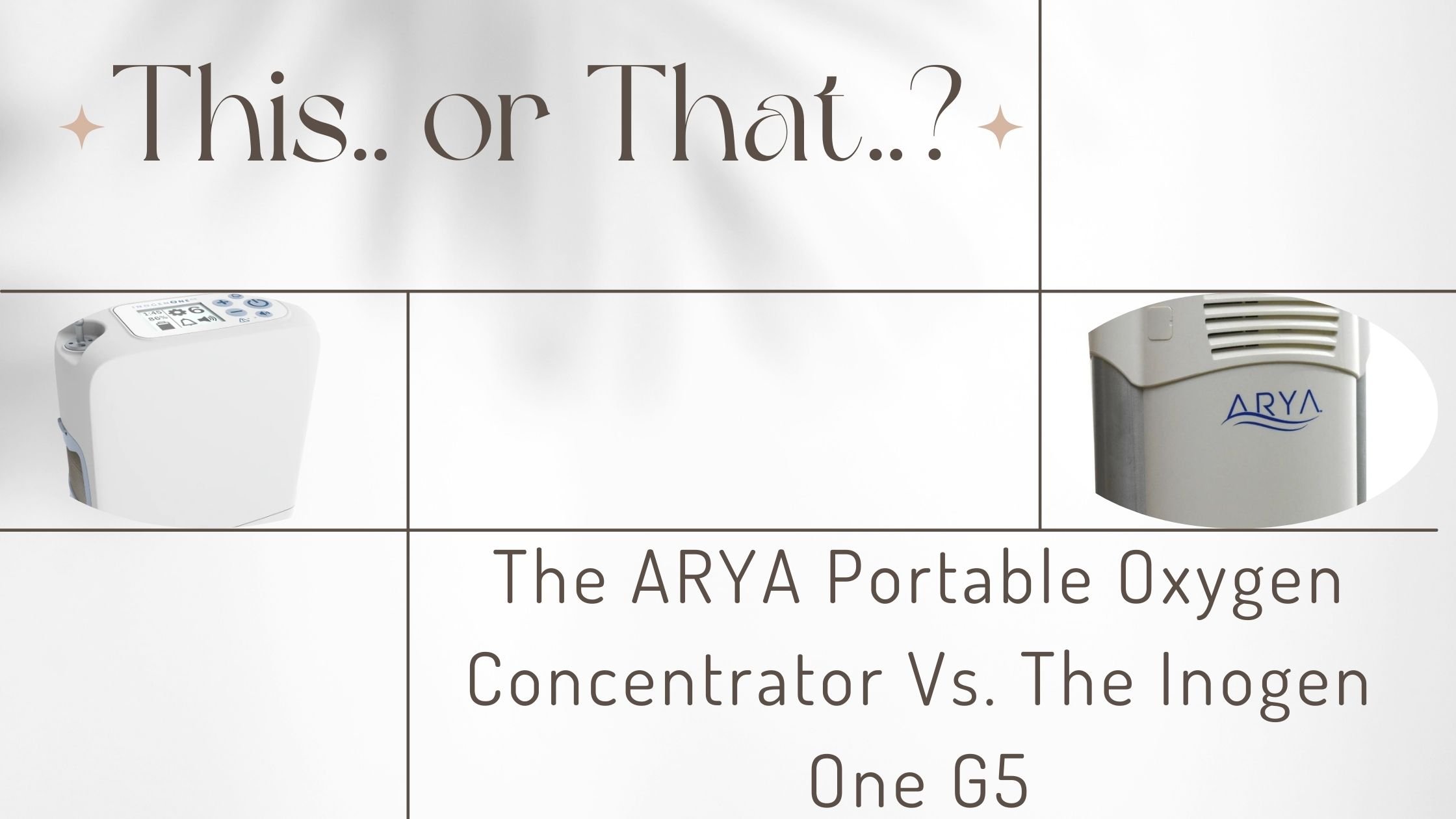
We are offering a new product: the ARYA Portable Oxygen Concentrator. We’re excited to offer this new pulse flow unit because it affords oxygen patients another great option when it comes to customizing their oxygen therapy experience.
But as you likely know, we try to avoid pushing out older products if there are still people out there who benefit from them. So, even with this new release, you’ll be happy to know that you will still have access to all your favorite oxygen concentrator brands like AirSep, O2 Concepts, Respironics, and more.
However, as usual, we want to provide you with all the resources you need to make an educated decision about your oxygen usage. There are hundreds of oxygen delivery machines out there, but many of them are either obsolete or they don’t provide patients with the benefits they want and need. It would be way too overwhelming to talk about every oxygen concentrator in one post, so we decided to break them up and compare two concentrators side-by-side.
In this post, we’re going to compare the new ARYA and the Inogen One G5. If you have any questions, feel free to leave a comment with your phone number or email address so we can reach out to you.
ARYA Portable Oxygen Concentrator Overview
ARYA is the top oxygen concentrator manufacturer in the world.

The ARYA portable Oxygen Concentrator is currently the leading pulse flow portable oxygen concentrator offered by the company. Despite only being on the market for just over a year, the ARYA has already made a name for itself by offering impeccable oxygen output, a lightweight design, and several unique features that aren’t offered by any other portable oxygen concentrator.
Inogen One G5 Overview
Inogen is — without a doubt — one of the most trusted and recognizable names in oxygen therapy. Inogen makes more portable oxygen concentrators than most companies out there, but they never lack when it comes to quality either. In fact, most oxygen patients and oxygen retailers eagerly await the release of new Inogen products, because they know they will break boundaries in terms of battery life, weight, and oxygen output.
The Inogen One G5 was released in the summer of 2019 and it’s the latest POC produced by the company. With outstanding battery life and lightweight design, it’s our pick for one of the best portable oxygen concentrators of 2020. Accompanying the release of the G5 were a whole host of accessories that allow you to customize your experience to your liking.
Maximum Oxygen Output
Maximum oxygen output is the total amount of oxygen a concentrator can put out in a given period of time. Many people who are new to oxygen therapy are confused by this because not all oxygen concentrators are measured the same. Continuous flow concentrators like the Respironics SimplyGo are measured in liters per minute (LPM) while pulse flow concentrators like the G5 and ARYA are measured in milliliters per minute (ml/min). The higher pulse flow setting you use, the more oxygen it will put out with each “bolus.”
Both the G5 and the ARYA have a high oxygen output for their class. The G5 has a maximum output of 1,260 ml/min with flow settings 1 through 6 and the ARYA has a total output of 1,050 ml/min with flow settings 1 through 5. Compared to other pulse flow concentrators, both these units provide a high oxygen output that’s more than enough oxygen for the majority of oxygen users.
Weight
The main reason for purchasing a pulse flow POC over a continuous flow POC is weight. While continuous flow POCs can be taken pretty much anywhere, they’re typically too heavy to carry on your shoulder or back. Instead, you’ll have to use a carrying cart which can be a huge pain. Pulse flow units, on the other hand, are light enough that you can use a shoulder strap or even carry it in your hands.
There isn’t a huge difference between the weight of the G5 and the weight of the ARYA. With the smaller 8-cell battery, the G5 weighs about 4.7 pounds and the ARYA weighs about 5 pounds. Side-by-side you probably won’t notice a difference between the two, however, if you have back pain the Inogen One G5 may be the way to go. Either way, lightweight portable oxygen concentrators are the standard, so don’t settle for anything less!
Battery Life
When you look back at the past decade of portable oxygen concentrators, it’s pretty amazing to see how far batteries have come. Several years ago, POC batteries would only afford you a couple of hours of freedom before you had to go home and recharge them. In many cases, it was better to use an oxygen tank because, even if they were bulkier, they enabled you to be out of the house for longer.
However, in this day and age, POC batteries have far exceeded our expectations. With the G5 double battery, you can run your device for 13 hours on a setting of 1 and a ARYA with the 16-cell battery can run for an impressive 16 hours without charging. This is more than enough battery life to be able to stay out all-day while living life on your own terms.
For most oxygen users, battery life is a top priority when choosing an oxygen concentrator. If you have a long-lasting battery, you’ll be able to see more and do more. For example, if you want to take a trip around the world, you don’t want to have to constantly stop what you’re doing to go back to your hotel in order to charge your portable oxygen concentrator. Even people with more severe COPD want longer-lasting batteries, which both the G5 and ARYA can offer.
Design
The ARYA and Inogen One G5 are both very well-designed portable oxygen machines. They have a solid outer shell which will help protect the internal components from damage and they’re compact enough that you can hold them at your side comfortably. The G5 was more based on the Inogen One G4’s look while the ARYA has a design similar to the Inogen One G3. Either way, it’s simply a matter of preference as to which one you like more.

One unique feature about the ARYA is its ergonomic shape. The expert oxygen manufacturers at ARYA noticed that there was no POC on the market with a shape that matched the natural curve of your body. So, with the ARYA, they added a slight curve to the device. When you’re walking around enjoying your day, your concentrator won’t be sliding around and causing a disturbance.
Another design feature you can find on both these concentrators is the easy-to-use interface. Rather than having a control panel with tons of buttons, the G5 and ARYA opt for a minimalist design. On the ARYA, there are only three buttons: two for the flow setting controls and one for the power. On the G5, there are five buttons. They control the oxygen flow setting, power, and visual and audio notifications.
Additional Features
Despite being very easy to use, these portable oxygen concentrators are some of the most feature-heavy on the market. The greatest part of all is that you’ll never be forced into using anything that you don’t want to use.
One of the additional features of the Inogen One G5 is a mobile application called the Inogen Connect. This was implemented with the release of the G4 and it was brought back due to popular demand. Essentially, it allows you to connect your POC to your smartphone or tablet via Bluetooth. Once that’s done, you’ll be able to view up-to-date information about your device like its battery life, column status, and oxygen purity status. You can even view your G5 user manual and troubleshooting information.
An additional feature on the ARYA is the ARYAView™ Telehealth Technology. This is similar to the Inogen Connect in that it shows you critical information about the status of your portable oxygen concentrator, however, it has some additional features that makes the ARAY one of the most advanced POCs ever created.
“Telehealth technology” is a rather new term in the medical field, but it refers to the use of technology to connect patients and clinicians over long distances. ARYAView™ connects to your POC just like the Inogen Connect, but in addition to providing information about your device, it’s securely connected directly to your oxygen supplier allowing them to remotely monitor and troubleshoot your device on command.

While telehealth technology still has a long way to come in terms of accessibility, it shows how far portable oxygen concentrators have come and where they could potentially go in the future. If you’re curious about testing this out, it may be a great reason to choose the ARYA over the Inogen One G5. Just remember that these are additional features, so if you don’t want to fuss with them then you don’t have to!
The Best Candidate for the ARYA Portable Oxygen Concentrator
Although ARYA may not be the most recognizable brand by the average consumer, the impact they’ve had on oxygen therapy and oxygen delivery is undeniable. They proudly provide military-grade oxygen supplies for the armed forces and they gladly offer the same quality products for oxygen patients back home. TheARYA Portable Oxygen Concentrator is just the latest pulse flow portable oxygen concentrator in their line of impeccable oxygen machines.
TheARYA excels in most aspects offering a high oxygen output, lightweight design, and the innovative ARYAView™ telehealth technology which allows you to get real-time troubleshooting assistance on the fly. The ARYA is recommended to anyone who needs 1,050 ml/min or less of oxygen and anyone who wants to live life on their own terms without being held back by a bulky oxygen device.
The Best Candidate for the Inogen One G5
Ever since its inception in the early 2000s, Inogen has been dead set on making oxygen more accessible and easy to use for oxygen patients all around the world. With each product release, they’ve accomplished this with flying colors. In fact, Inogen concentrators are so advanced that oxygen patients continue to use older generations of their concentrators many years after their release.
Since its release last summer, the Inogen One G5 has often been labeled “the best oxygen concentrator” due to having the highest oxygen output of any pulse flow concentrator, in addition to maintaining many of the other features patients love in their POC such as a lightweight design and long-lasting battery life. We recommend the Inogen One G5 to anyone who requires 1,260 ml/min of oxygen or less (flow setting of 6 or less).
Conclusion
There are many great portable oxygen concentrators for sale, but the ARYA and Inogen One G5 are just two of the latest and greatest. Whether you’ve just started your search for a POC or you’ve already narrowed down your choices, don’t hesitate to get in touch with one of our respiratory specialists to seal the deal. We’ll make sure you’re getting the oxygen machine that you want and need and we can answer any questions that you may have.
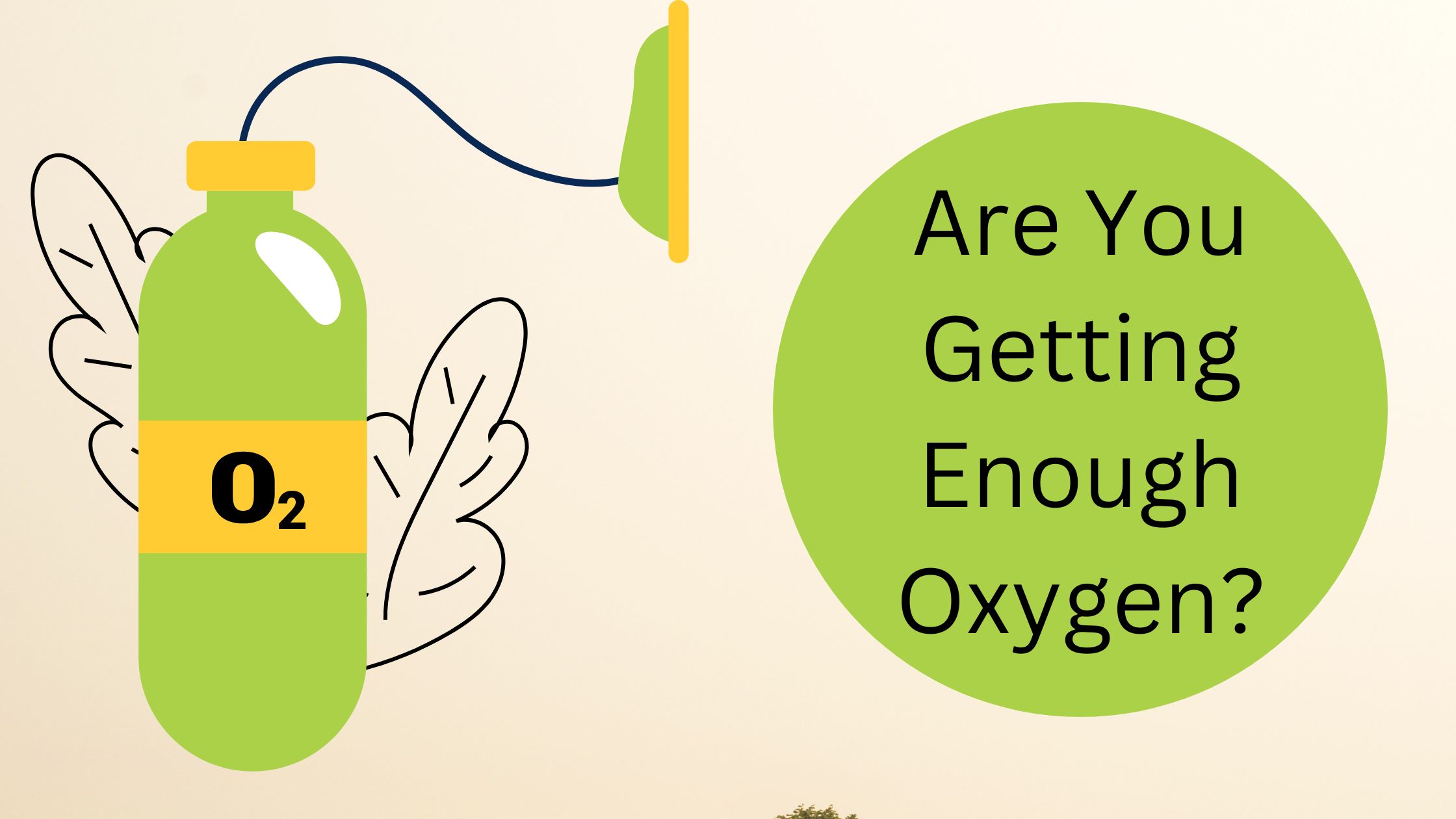
Even if you are not short of breath, or experiencing symptoms of breathlessness, you blood oxygen levels could be dangerously low! Read this blog to learn about how much oxygen you are getting compared to how much you need.

The hallmark symptoms of COPD are shortness of breath, or feeling breathless. It's certainly one of the most common symptoms, as well as that most invasive. Whether you're the person with COPD or the caregiver, shortness of breath is scary and unsettling for everyone involved.
There are devices called pulse oximeters, which measure your oxygen saturation levels. This is important for COPD patients to know how much oxygen they are able to process. Pulse oximeters have become more popular and accessible in recent years.
{{cta('fa8abc2a-1e88-4fa3-82fd-1cb5b9ed43b2','justifycenter')}}
This is both a good and bad thing because COPD patients may be relying as much on their oximetry results as their actual symptoms when evaluating their breathing capabilities. It can cause a lot of confusion.
The confusion comes from having a "normal" oxygen saturation level, but still feeling extremely short of breath. Also, it might be hard to notice any symptoms even when your oxygen saturation levels are dangerously low.

We are going to clear up this confusion in this blog.
The Difference Between Shortness of Breath and Being Hypoxic
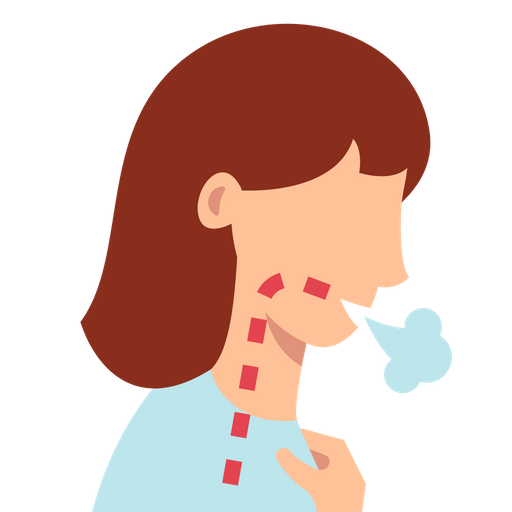
There are the three main factors that impact how well your body is able to take up and use oxygen.
- How well your lungs absorb oxygen into your body and release carbon dioxide.
- How well your heart is able to pump oxygen throughout your body.
- How well your cells and muscles use the oxygen they get from your blood.
Obviously, various diseases like COPD or heart disease will inhibit some or all three of those factors. COPD causes intense lung damage, and even cardiac problems, that definitely can impact all three of these.Treatment methods including medication, supplemental oxygen therapy, and exercise can help in improving the way your body utilizes oxygen, and in turn, making you less short of breath.
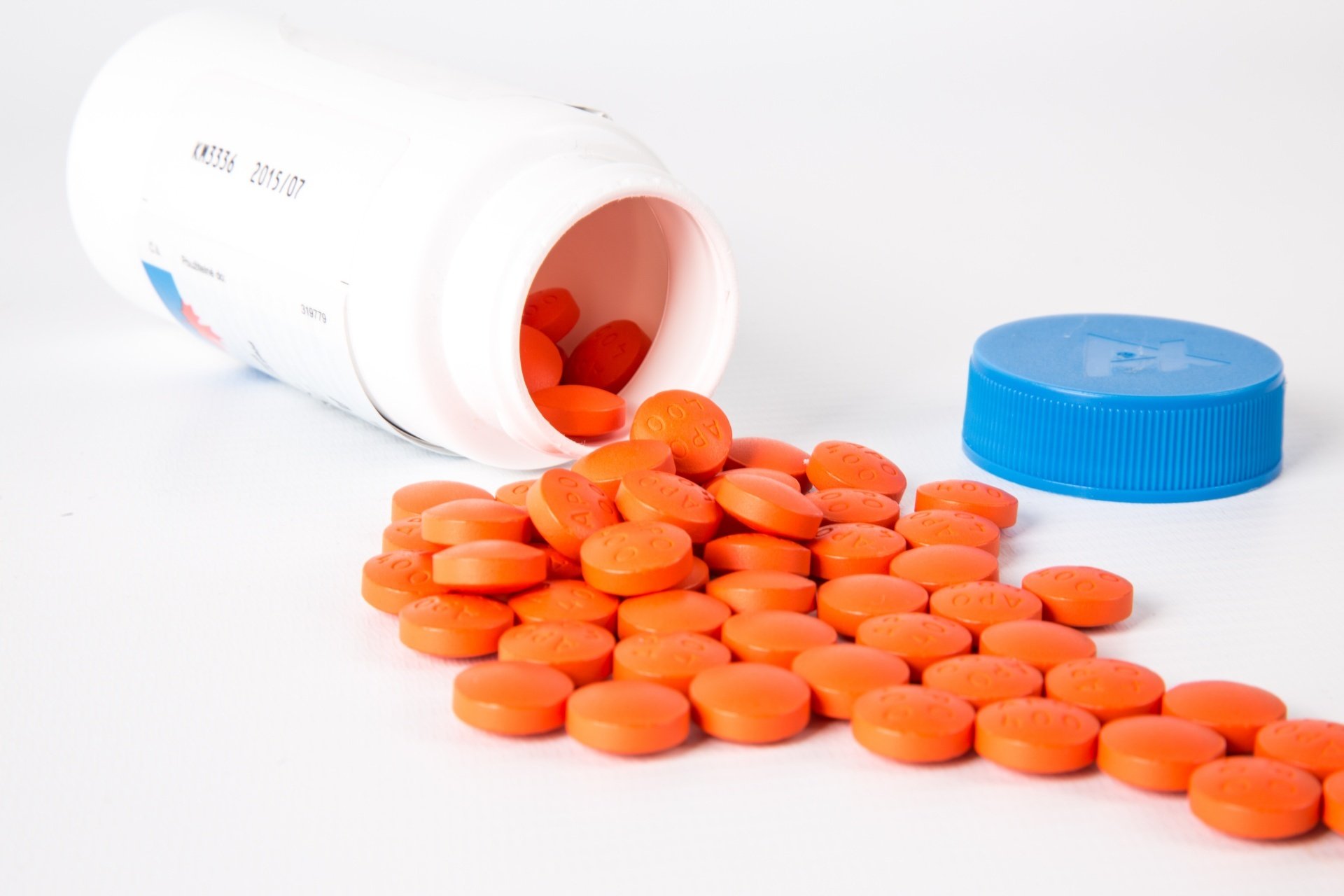
Feeling breathless
Have you ever felt yourself gasping for air, or feeling out of breath even when you’re not exerting yourself? Well this can happen to anyone, and while it is a common symptom of COPD, not everyone who feels short of breath has COPD.
![]()
Breathlessness is associated with lung damage and/or airway inflammation but it can also be caused by:
- Heart health
- How fit you are
- Emotions
- Weather
- Altitude
- Infection
- Low red blood cell count (anemia)
![]()
Even if you are t feeling breathless, this does not always mean that you are hypoxic.
Being Hypoxic or Having Hypoxemia

There is a difference between hypoxemia and being hypoxic. Hypoxia is when there is a low level of oxygen in your blood. Being hypoxic means that not enough oxygen is getting to your body's cells.
These impact your body at two different stages when your body is working to absorb oxygen.
You can find your oxygen saturation level and test whether or not you have these conditions. There are two ways to measure it:
- Arterial blood gases test. This takes place at your doctor’s or a with a lab tech
- Using a pulse oximeter. This you can do on your own, and the small device fits over a finger tip. It uses infrared rays to measure the percentage of oxygen in your blood.
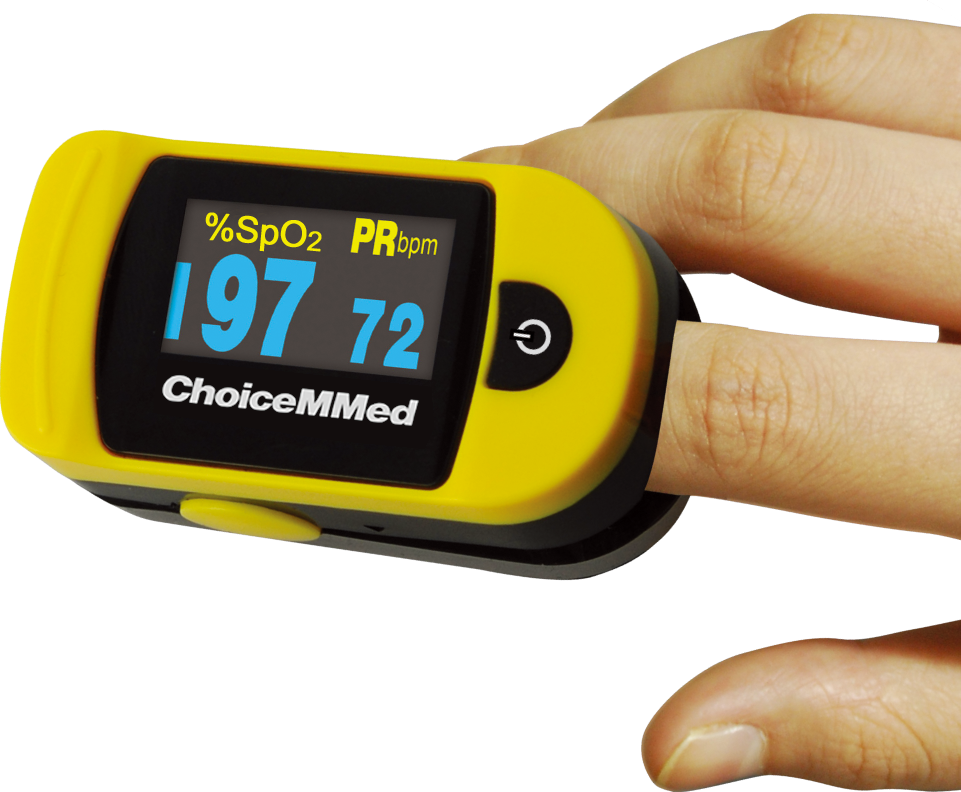
Oxygen saturation is largely dependent on your overall health. This can be indicated by how fast you are breathing during activity and rest.
A typical healthy person has oxygen saturation levels that range from 95 to 100%.When saturation levels drop to 90% and below that is considered low and unhealthy. COPD patients often dip below 90% at times.
Feeling Breathless But Not Hypoxic
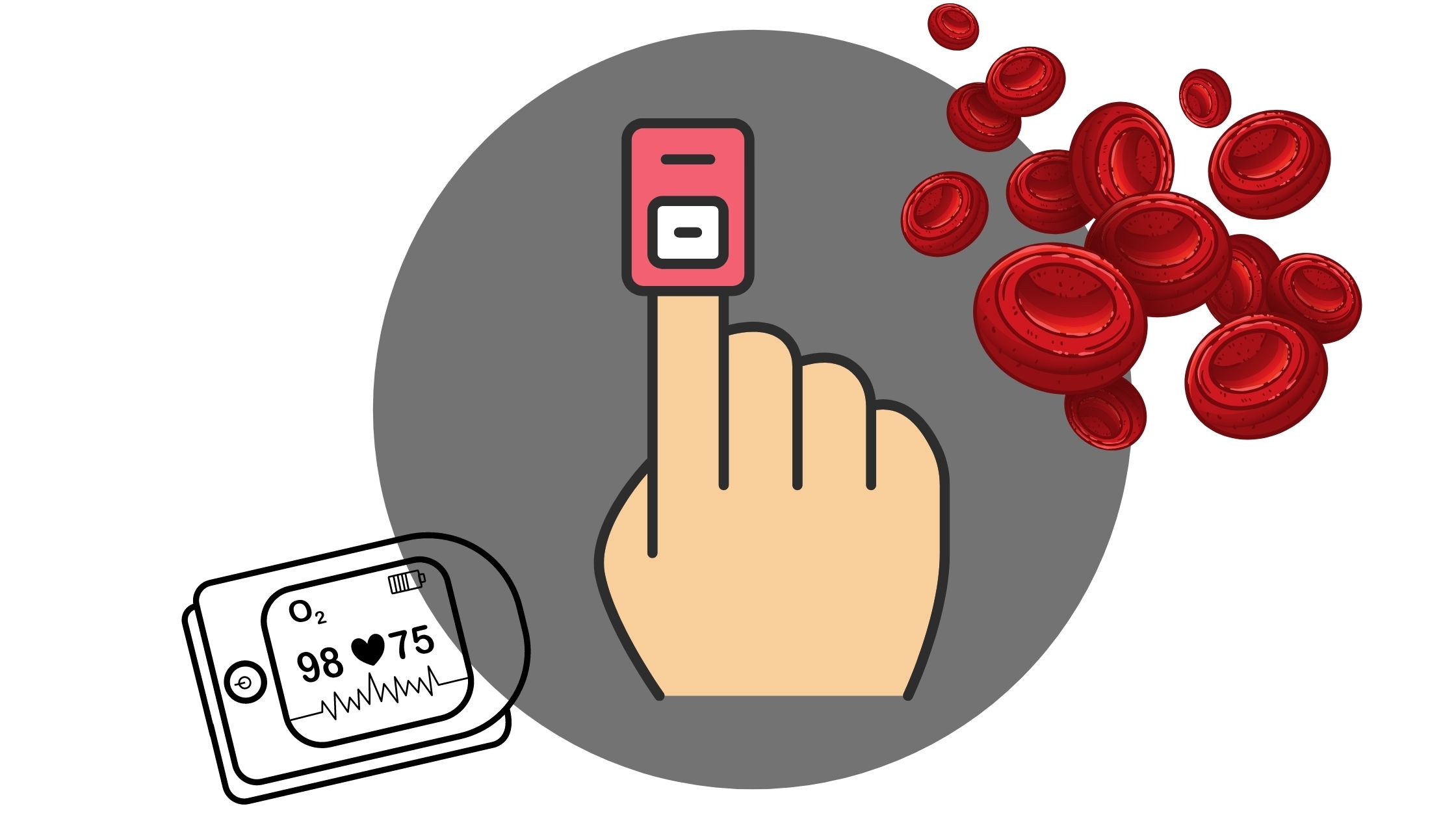
Now that you have an understanding of oxygen saturation, and the symptoms associated with low levels of oxygen, you might be wondering, “Why am I so short of breath, but my oxygen levels are still normal?"
Well, even if you're experiencing extreme breathlessness, but your oxygen saturation levels remain in that 95% - 100% healthy range, then supplemental oxygen will not solve your problem.
Instead, you need to learn how to recover from breathlessness. Try stopping what you’re doing and resting right away.
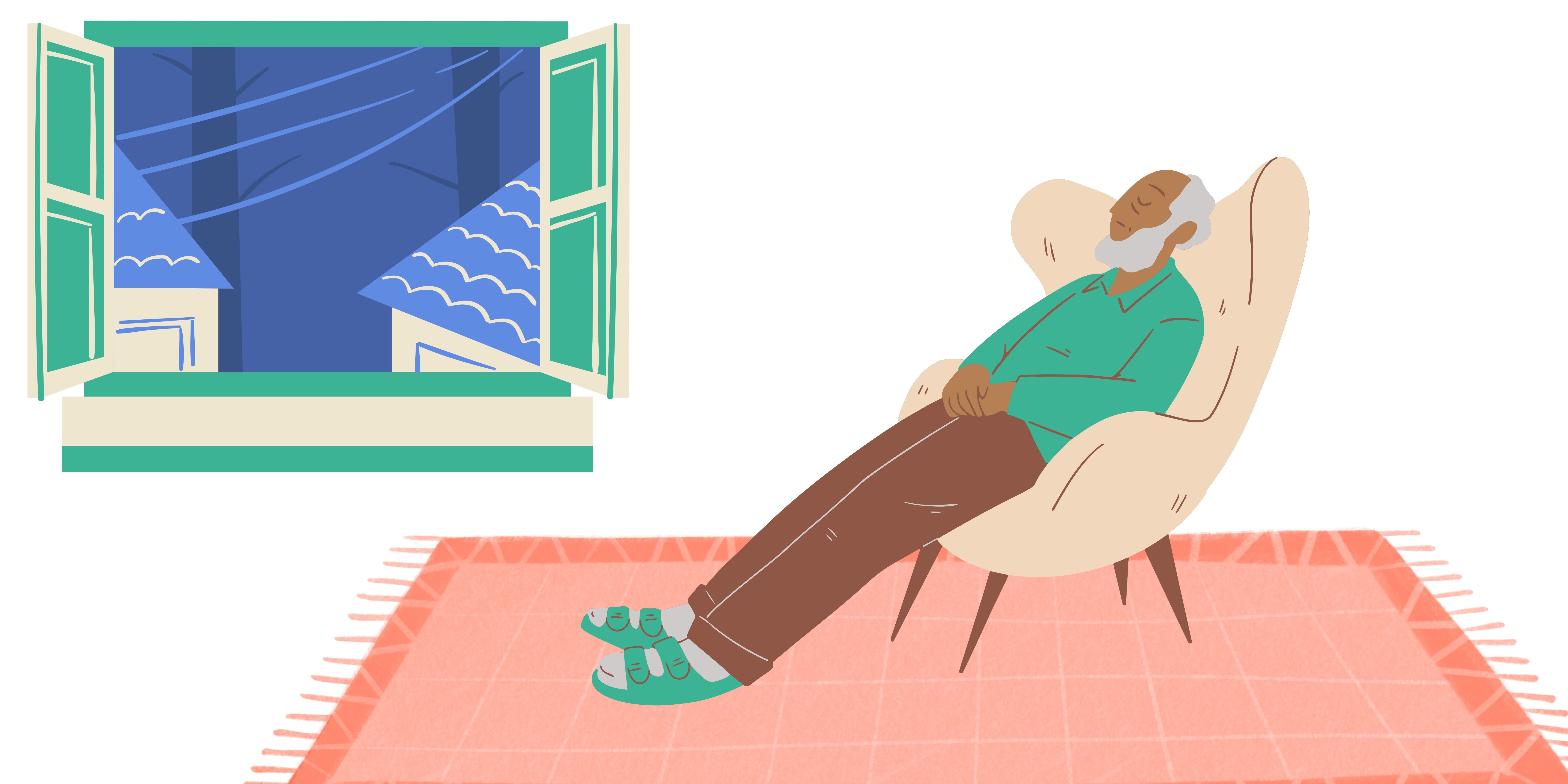
After stopping the action that caused your breathlessness try these additional actions:
- Remind yourself that you know what to do. Taking action can help you overcome the anxiety that often goes along with being short of breath.
- Position yourself to breathe easier. Leaning forward or bending over helps drop your abdomen away from your lungs, making breathing easier. Lean your arms on your knees or on some stationary object like the wall or a counter. (I remember often seeing my dad doing this, especially after a severe coughing spell.)
- Work on controlling your breathing. If you know how to do diaphragmatic or pursed lip breathing, then do so. If you haven't learned those techniques yet, then at least work on slowing and deepening your breaths in and out.
- Once you are feeling better and more in control of your breaths, it may be time to resume whatever you had been doing. But you may need to modify the intensity to avoid re-triggering your breathlessness.
Pulmonary rehab is another great tool that can be beneficial in teaching you how to avoid and/or deal with this symptom. These are classes you take with trained professionals, they teach you breathing exercises and physical activities that are good for your level of health.
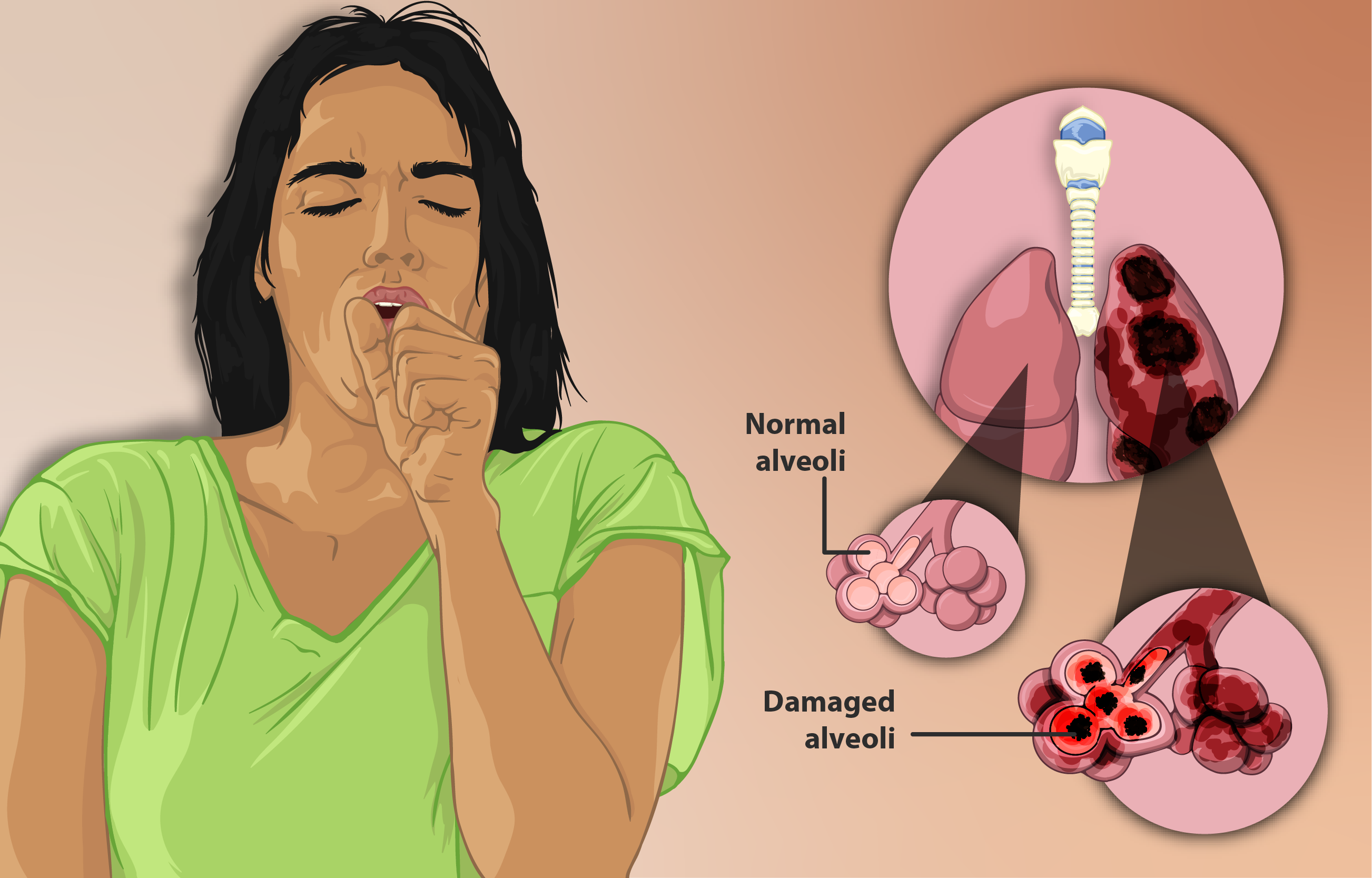
You can also look into a rescue, or quick-relief, inhaler. Talk with your doctor about these options, because they can offer some relief in your situation.
Hypoxic But Not Feeling Breathless

Even if you are not feeling at all breathless, your oxygen levels can still be low, and this is an important concept to understand. Low oxygen saturation levels are not healthy, do not ignore it. Get your oxygen levels tested regularly, even if you are not short of breath.
If you do measure low oxygen levels during a blood test, or while conducting pulse oximeter tests. Speak with your doctor right away about the next steps you must take to get your levels to normal.
This is often when people need a portable oxygen concentrator to use as their additional source of oxygen. Devices like the Inogen One G5, and the ARYA P5 Portable Oxygen Concentrator often oxygen patients medical grade oxygen they can use 24/7.
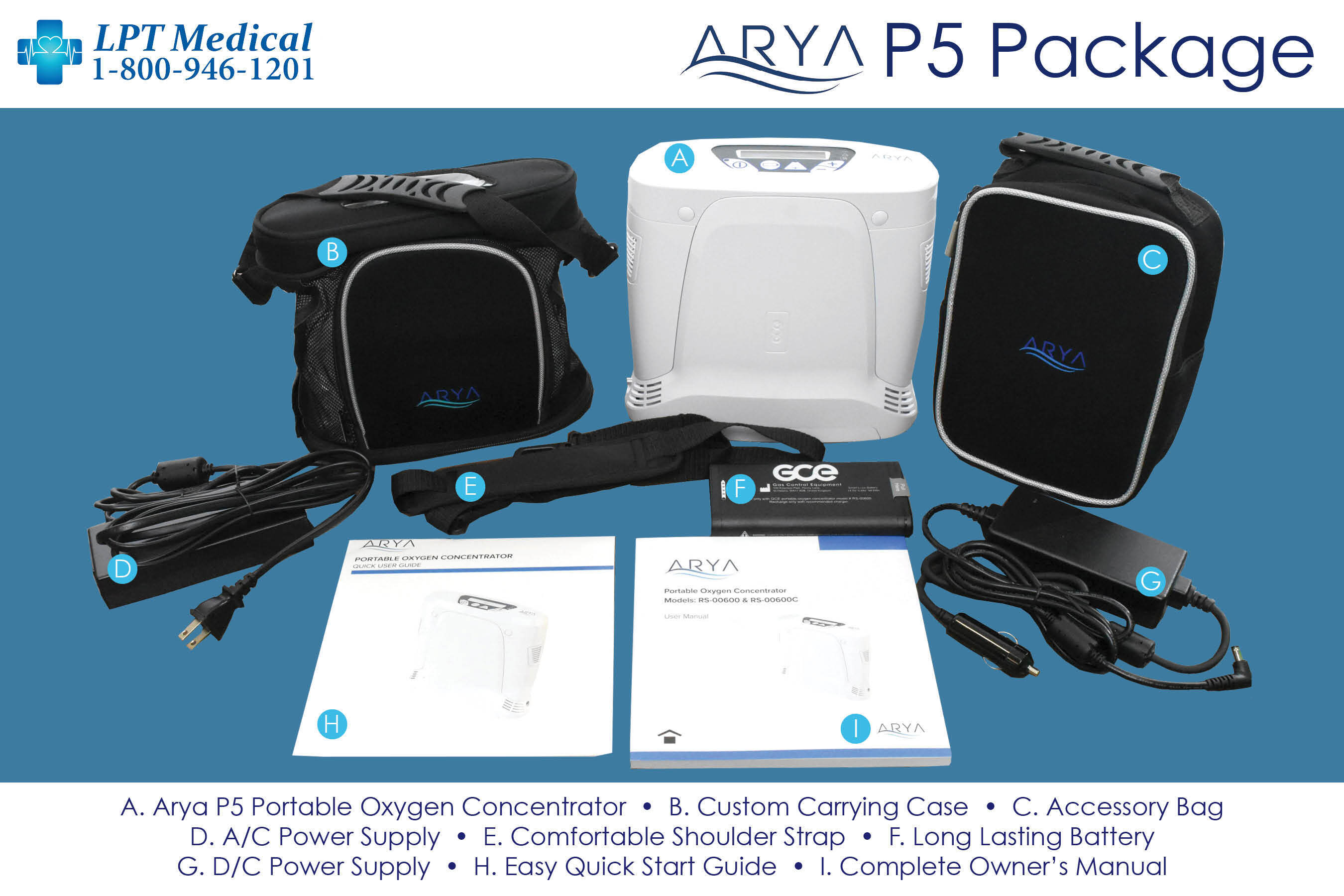
It means your blood and tissues are not getting the oxygen they need to survive, and it needs to be addressed right away.
The answer to hypoxia is supplemental oxygen therapy. However, how much and how often you need oxygen depends on the progression of hypoxia you are experiencing and your health care team will determine this. It is also important that your healthcare team helps you with a plan for how often to measure your oxygen levels with a home pulse oximeter.
Overview
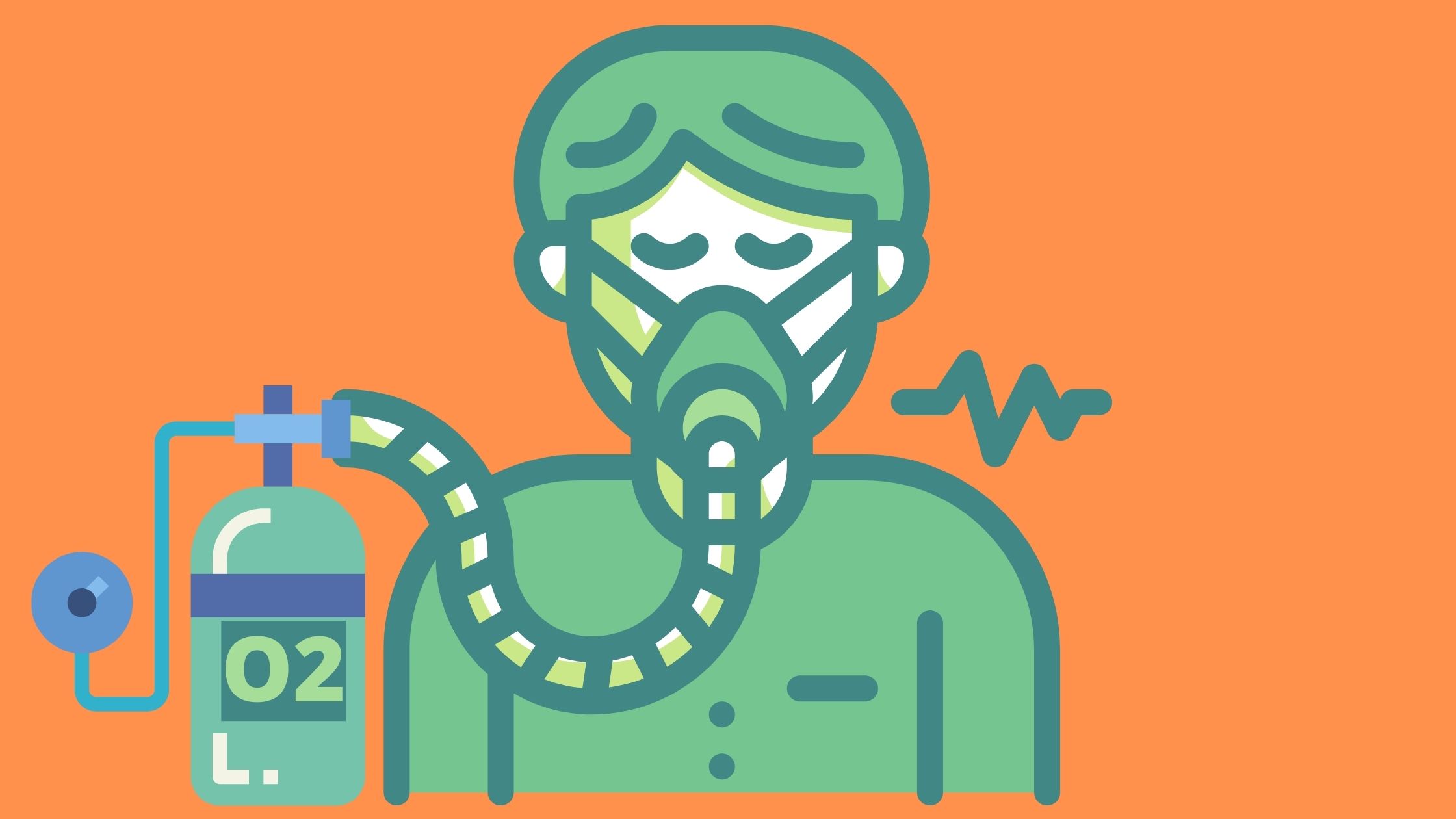
If you have COPD, remember that shortness of breath (and other symptoms, such as coughing) are an important thing to take note of. Track your symptoms to measure your current health status and how your health changes over time.
As far as knowing your oxygen saturation level, you will need to monitor this regularly because even if you are not short of breath your oxygen levels could be low, and that is dangerous. This is around the time you will need to call LPT Medical at 1+(800)-946-1201 to talk about your oxygen device options. On the other hand, and unfortunately so, it is entirely possible to be short of breath, but have healthy oxygen saturation.
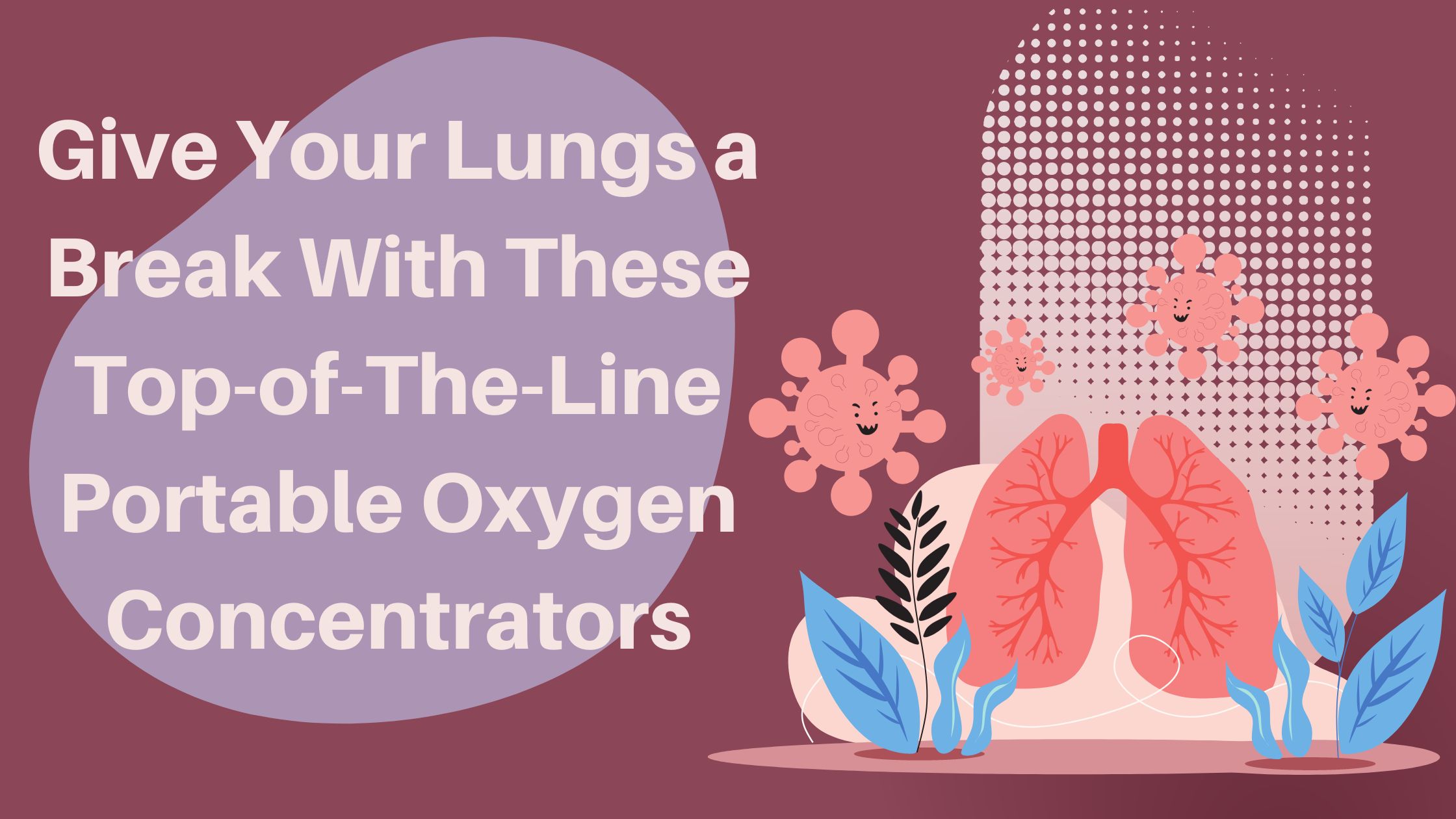
Giving your lungs a break is an important daily task you, as a responsible COPD patient, should work towards.
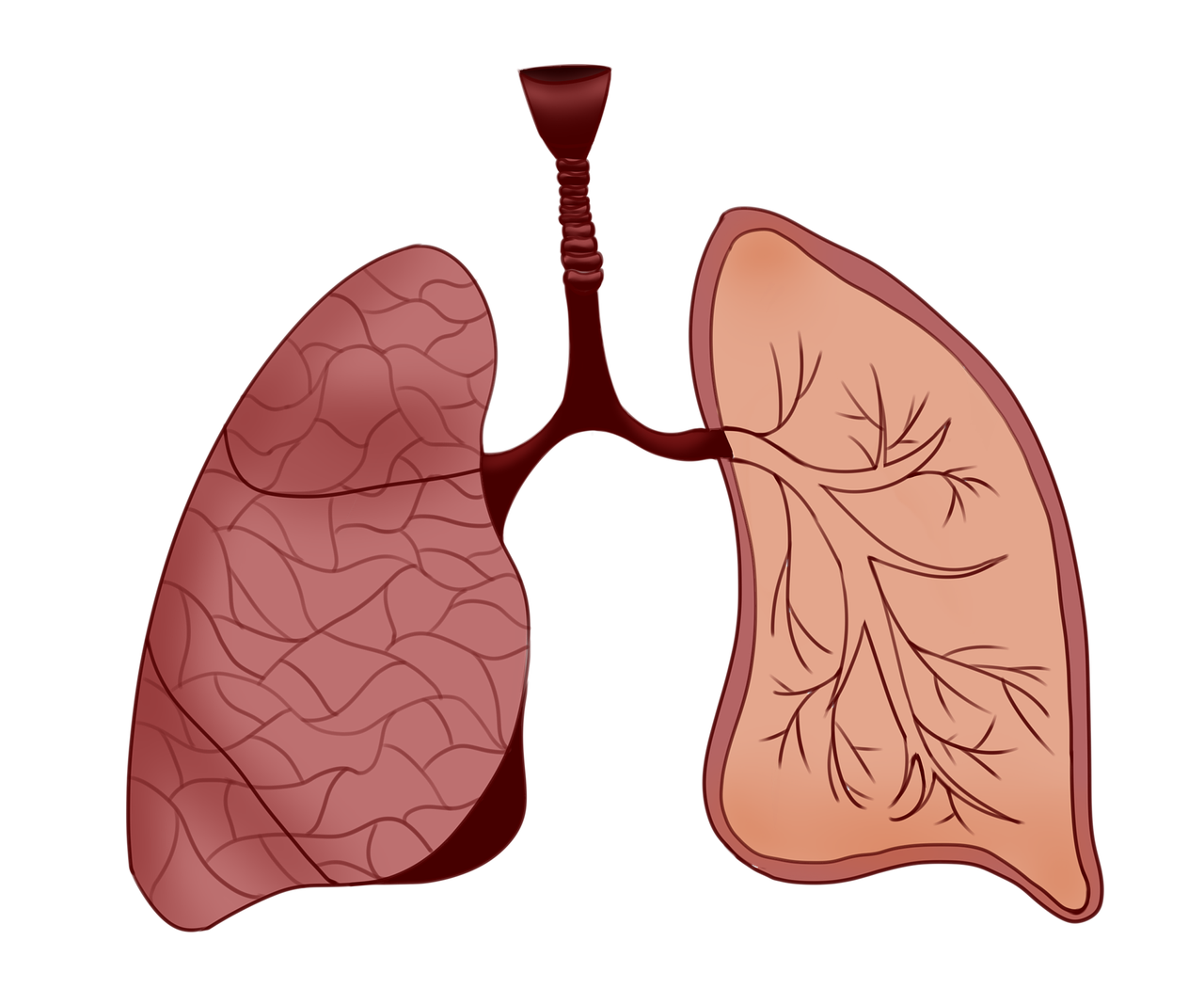
Every time you are able to make your lungs work less, you are bettering your condition and your livelihood. This can be as simple as getting an air purifier in every room of your home and should be as constant as adhering to your oxygen prescription daily.
In this blog we talk about the easiest way to give give you lungs a break. The best thing you can do is acquire a portable oxygen concentrator that will help you move through the day and your life with ease. In order for that to be a possibility, you need a supplement oxygen device unit this is lightweight, reliable, and affordable!
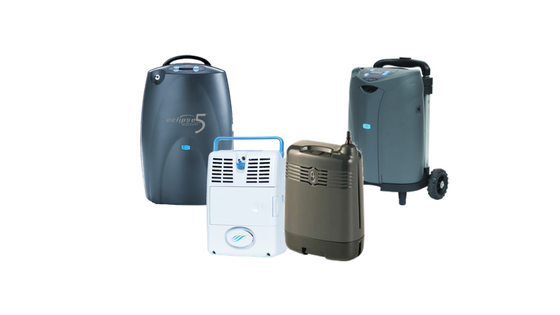
As you probably know Chronic Obstructive Respiratory Disease is a progressive illness that is not curable. Therefore, your treatment and how you manage this disease is essential to ensure your COPD does not progress quickly into a more severe stage of COPD.
Resting you lungs is, in itself, a treatment for managing COPD. By reading this blog, you can expect to learn the best oxygen units that will help you to manage your disease effectively and subsequently improving your quality of life with COPD.
Taking your Oxygen Therapy Seriously

If you are prescribed oxygen therapy, adhering to your prescription as you doctor orders is essential for taking care of your lungs, and overall health and well-being.
Long-term oxygen therapy is the only known treatment for COPD that is proven to extend the life expectancy of COPD patients. Therefore, using your oxygen equipment correctly can help you live a better quality life longer.
In this section we will discuss three portable oxygen concentrators all of which are reliable but each device is designed to cater to a different oxygen patient.
The ARYA P5 portable Oxygen Concentrator
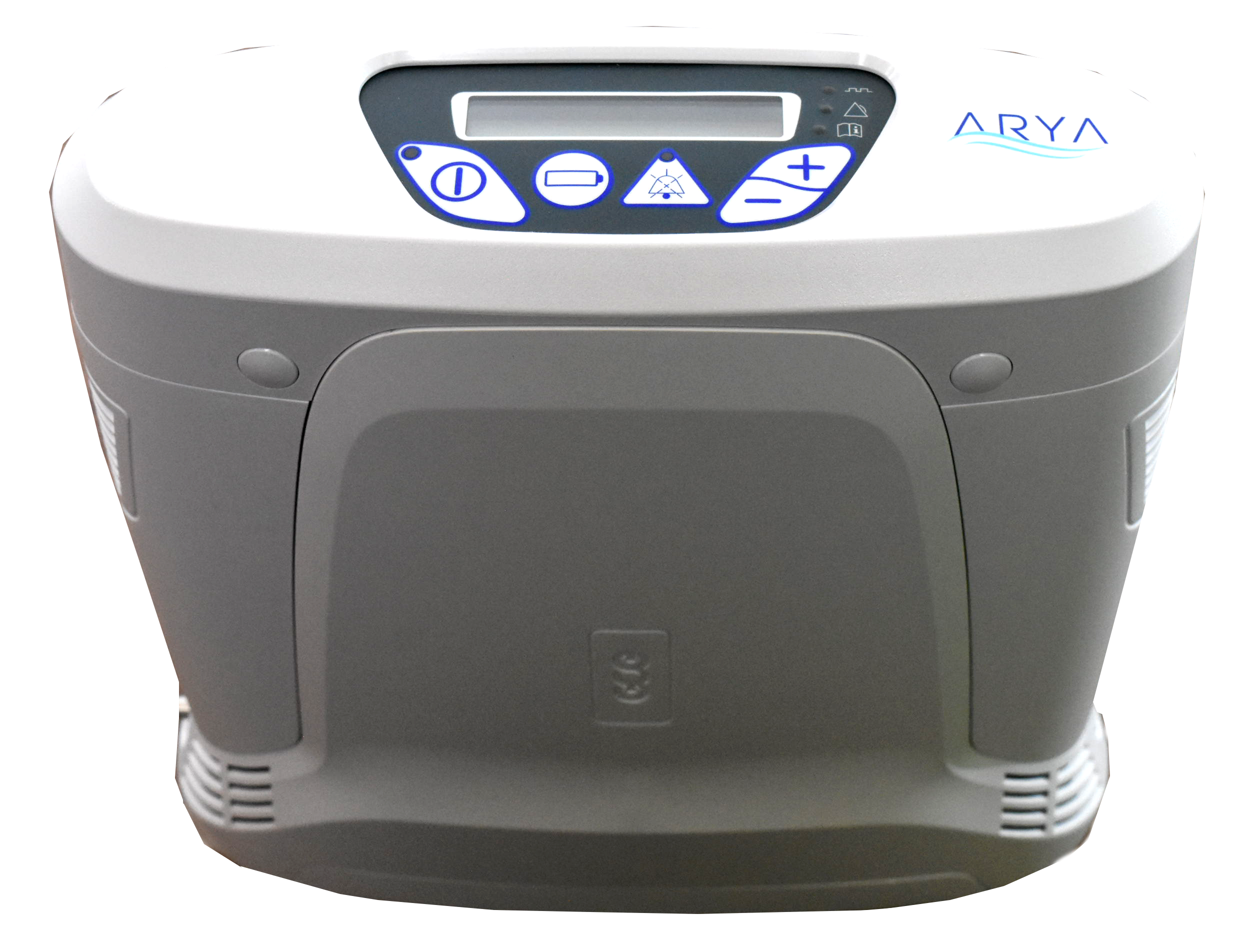
The ARYA P5 portable oxygen concentrator is already making a name for itself in the oxygen industry as one of the smallest and quietest portable oxygen concentrators on the market. It is one of the newest portable oxygen concentrators available and it's not only small, it's also reliable, gets great battery life, and offers 10 different oxygen settings for more accurate dosing.
Along with being one of the smallest and quietest portable oxygen concentrators on the market, the ARYA P5 portable oxygen concentrator has some amazing features that set it apart from the rest of the units on the market.

The ARYA P5 is going to make getting back to living an active life as easy as possible. It’s lightweight with long-lasting battery life helping you regain your freedom and independence. It gets up to 8 hours of battery life and offers 10 different oxygen settings! There’s no other lightweight portable oxygen concentrator on the market that will give you more accurate oxygen dosing while running for up to 8 hours
There are several reasons why oxygen patients should be excited about the new ARYA P5 portable oxygen concentrator. The first, and most importantly, is that the oxygen delivery service is unmatched.
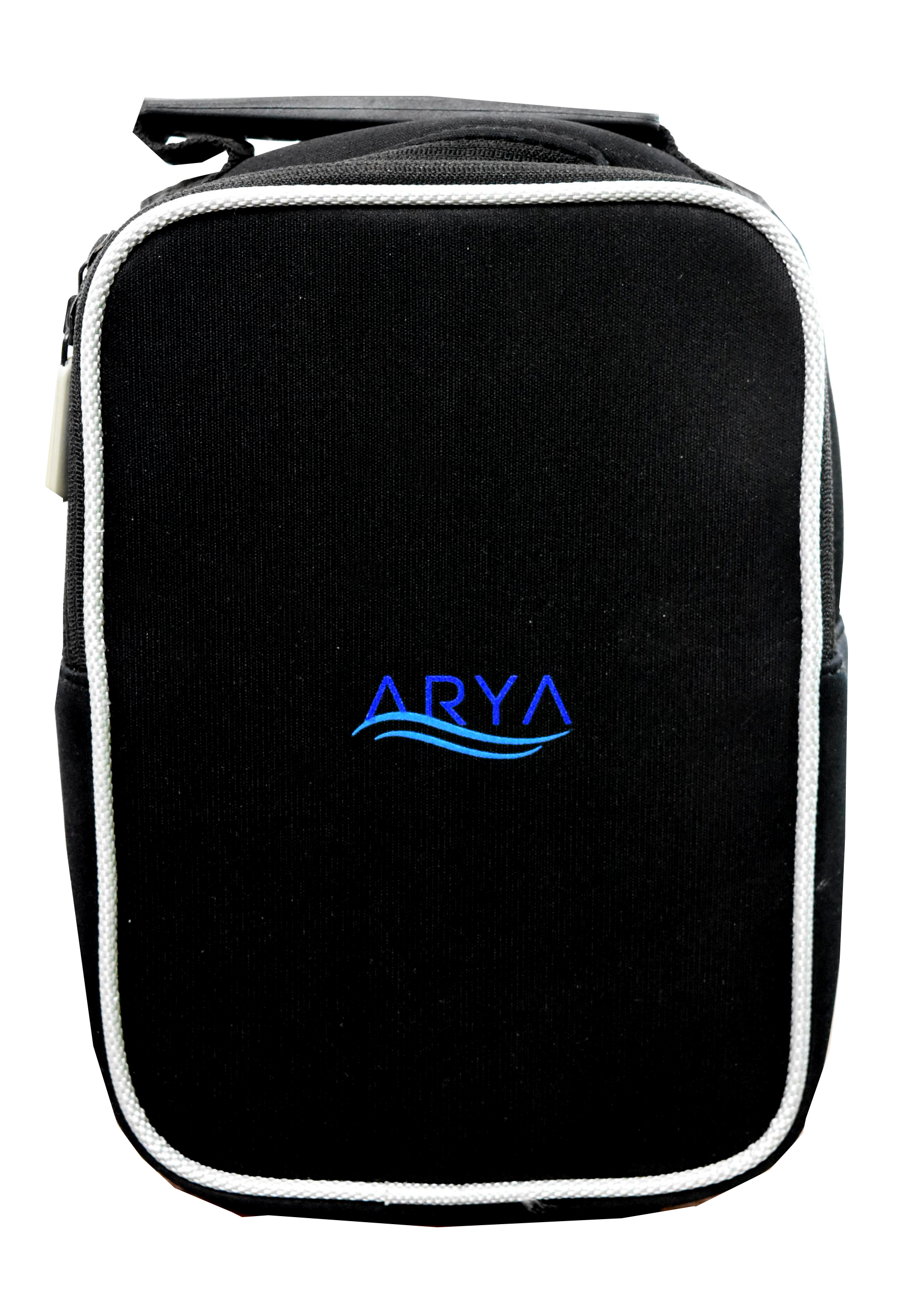
When looking for a portable oxygen concentrator, the second most important priority should be the weight and size of the oxygen device.
As mentioned above, the ARYA P5 is one of the smallest and lightweight portable oxygen concentrators money can buy! It weighs just 5.5 pounds with the battery installed, and it stands 9.8” W x 3.8” D x 9.25” H.
At 5.5 pounds, the ARYA P5 is going to be a great companion for anyone that is interested in a healthy and active lifestyle. Exercise becomes easier, being more mobile and independent is also an option now. Traveling no longer seems like a chore, but it is something to be excited about!
Not to mention, with the ARYA P5 you will have the oxygen you need without sacrificing other parts of life. Go exercise, grab lunch with your friends, or spend a day golfing without feeling weighed down by your oxygen.
The ARYA P5 is a device that will help first time oxygen users and long time oxygen users by giving everyone who needs supplemental oxygen therapy the freedom and independence they need.
The ARYA P5 offers a high oxygen output to accommodate as many oxygen users as possible. The ARYA P5 has 10 adjustable oxygen settings. It offers pulse flow settings 1-5 and increases by increments of 0.5. This precision oxygen delivery is important for people so they are getting the exact amount of oxygen their bodies require, not too much and not too little!
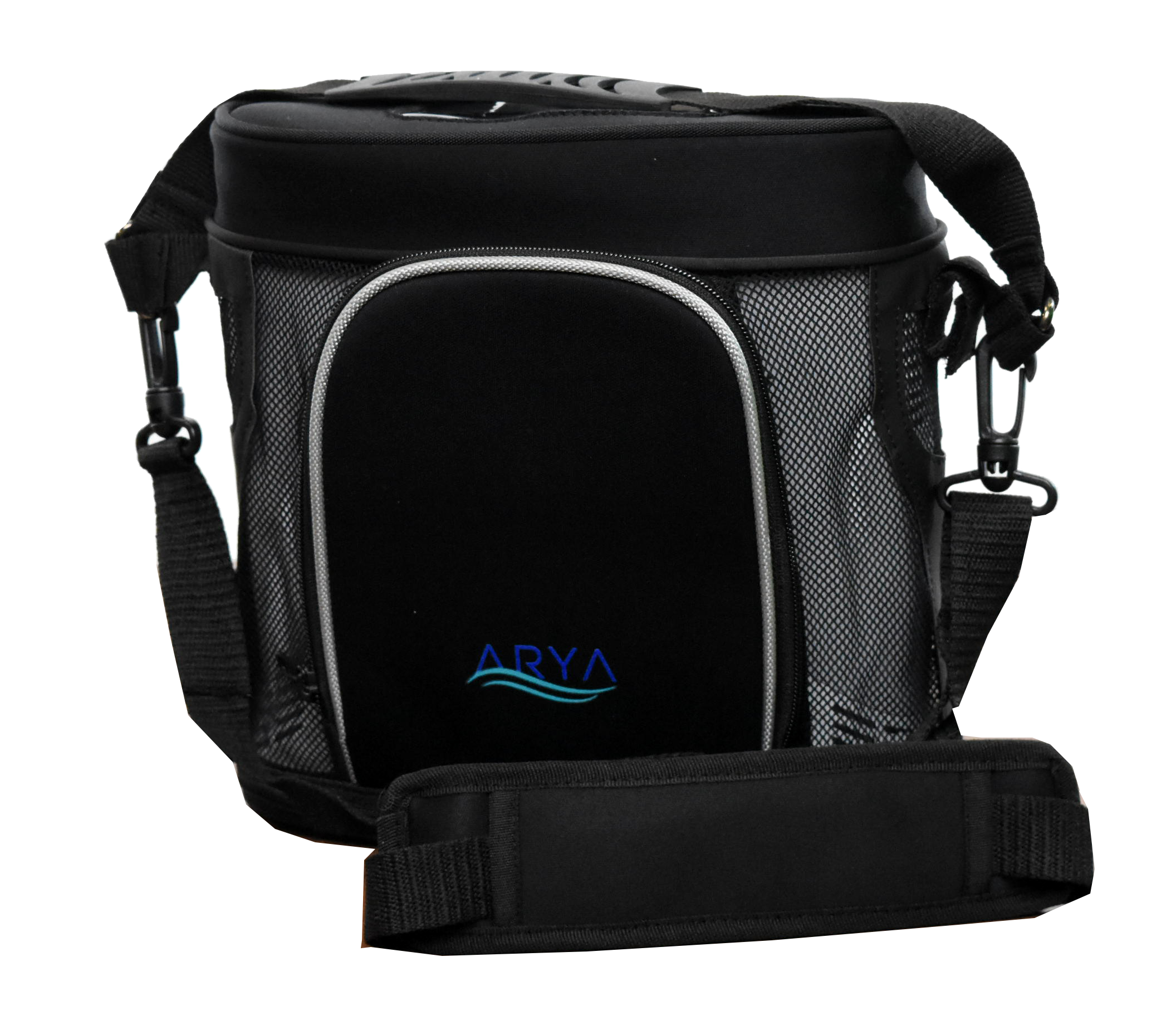
It offers pulse flow settings 1-5 that can be adjusted in 0.5 increments. So whether you’re exercising, feeling sick, or are experiencing an exacerbation you will be able to increase the machine’s oxygen output to get the oxygen you need. Just remember to check with your doctor before you increase the flow rate on your machine.
The ARYA P5 also comes equipped with RATE RESPONSIVE THERAPY™ (RRT) that delivers oxygen on demand! Everytime the device senses an inhalation, the breadth th triggers the device to respond accordingly. Whether a patient is climbing the stairs or taking a walk, ARYA P5 will automatically respond to the breath rate by adjusting the amount of oxygen needed to ensure the patient remains saturated.
The ARYA Portable Oxygen Concentrator

The ARYA Portable Oxygen Concentrator is a pulse flow portable oxygen concentrator (POC) that can cover oxygen patients that need pulse flow oxygen delivery less than 5 liters per minute.
One of the best things about the ARYA portable oxygen concentrator aside from it being lightweight (5 pounds) and having a long lasting battery (up to 16 hours) is the comprehensive warranty. It's not often you see a manufacturer give you an extended warranty on the portable oxygen concentrator as well as the sieve beds!
With the ARYA portable oxygen concentrator you will have added peace of mind knowing you get lifetime warranty on the unit and an industry leading 5 year warranty on the sieve beds!
Most manufacturers offer a 3 year warranty on their unit and a 1 year warranty on the sieve beds. But ARYA truly stands behind their product like no one in the industry.
The Respironics SimplyGo

The Respironics SimplyGo is both a pulse flow and continuous flow POC. It has the capabilities to support oxygen patients that need pulse flow operation up to 6 liters per minute or 2 liters of continuous flow.
Weighing in at a mere 10 pounds and standing 10" H x 6" D x 11.5" W, the SimplyGo is one of the smallest and lightest continuous flow portables available! You will be able to bring it with you wherever you go and you will have no problem finding a place to store it.
Your SimplyGo will easily fit underneath the seat in front of you on the airplane, you can store it on the floor of your car or in the passenger seat as you drive, and when you don’t need to use it you will be able to put it in your closet without having to clear space for it.
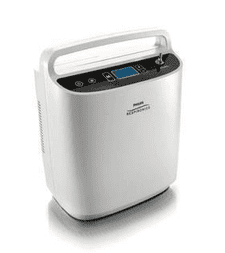
Although 10 pounds is extremely light for a continuous flow portable oxygen concentrator, it’s still pretty heavy to carry. But you won’t need to worry about that! Your SimplyGo package will include a custom carrying case and a wheeled travel cart so you have the option to carry it over your shoulder or you can pull it behind you on the travel cart.
The SeQual Eclipse 5
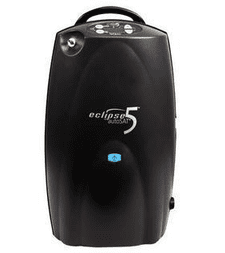
The SeQual Eclipse 5 POC is a popular continuous flow device that is also reliable and durable. It is rated to last for years and the POC of choice of the U.S. military!
The pulse flow settings range from 1-9 and the continuous flow settings range from 0.5-3.0 LPM, so it is able to cover most oxygen patient’s needs, and some!
{{cta('fa8abc2a-1e88-4fa3-82fd-1cb5b9ed43b2','justifycenter')}}
As mentioned above, the SeQual Eclipse 5 is one of the most, if not the most, popular continuous flow portable oxygen concentrators on the market. That is largely due to its long-standing track record for being durable and reliable. If it’s good enough for the US Military, that should tell you something.
The hard-bodied shell of the Eclipse 5 is extremely protective. It will keep your concentrator protected from everyday wear and tear, accidental bumps and bruises, and if you have pets or grandkids in the house it will be able to withstand their crazy antics.
One of the best things about the Eclipse 5 is that it requires very little maintenance from you to keep it running. All you need to do is wash your filter once every week or two depending on how often you use your Eclipse and you are good to go!


 So we can find the best portable oxygen concentrator for your needs!
So we can find the best portable oxygen concentrator for your needs!
